
Follow Us On @hpacmag DELIVERING SOLUTIONS, NOT A QUICK FIX TROUBLESHOOTING THE PERILS OF YOUTUBE DIY LATEST TEST & MEASUREMENT DEVICES DECEMBER 2022 HPACMAG.COM HEAT PUMP PROBLEM SOLVING AHR EXPO PREVIEW HYDRONIC CIRCUIT PURGING





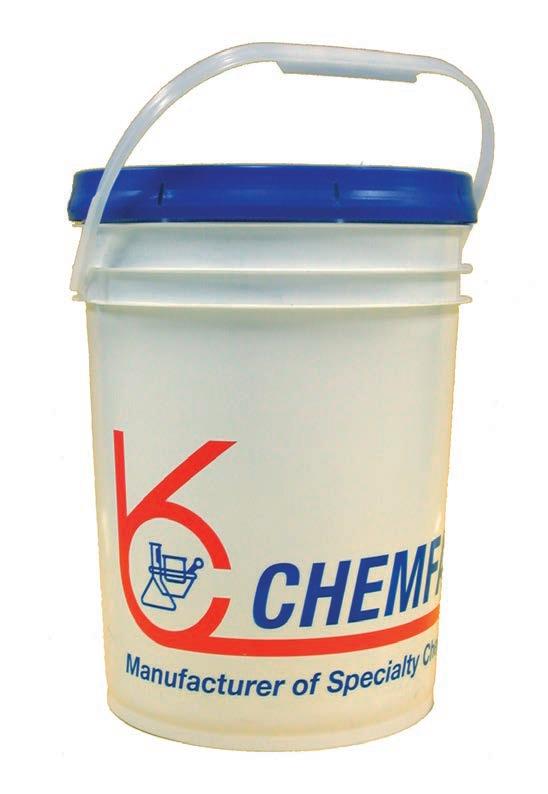

Not All Glycols Are Created Equal CHEM-FROST Safe For All Systems Including Aluminum and Solar Premier Inhibitors Higher Temperature Rated Low Viscosity your local wholesaler or visit chemfax.com CHEMFAX Manufacturer of Specialty Chemicals Low Viscosity your local wholesaler or visit chemfax.com TM

Not All Glycols Are Created E CHEM-FROST Safe For All Systems Including Aluminum and Solar Premier Inhibitors Higher Temperature Rated Low Viscosity your local wholesaler or visit chemfax.com Not All Glycols Are Created Equal CHEM-FROST Safe For All Systems Including Aluminum and Solar Premier Inhibitors Higher Temperature Rated Low Viscosity your local wholesaler or visit chemfax.com Chem Frost 100% Brand R Brand O Brand H Brand U Brand D Pail Size 20L 18.9L 18.9L 20L 20L 18.9L PG Concentrate Amount 95/5 92/8 N/A 94/6 95/5 95/5 Aluminum Safe YES LIMITED TO 65C NO NO NO NO Solar Safe YES NO SOME LIMITED NO NO NO Geothermal Safe YES LIMITED N/A N/A N/A N/A Temperature Rating 325F 275F 250F 250F 250F 220F Viscosity @ 35% 60C 5.5cP N/A N/A N/A N/A N/A Boiling Point @ 100% 417F 370F 370F 370F 370F 370F CFIA Approved YES YES NO NO YES NO Raw PG Grade FOOD INDUSTRIAL GRADE INDUSTRIAL GRADE INDUSTRIAL GRADE INDUSTRIAL GRADE INDUSTRIAL GRADE Purity of Propylene Glycol 99.94%+ N/A 98% N/A N/A N/A Phosphate / Nitrate NONE YES YES YES YES YES Inhibitor Type PDT NON-TOXIC DIPOTASSIUM PHOSPHATE DIPOTASSIUM PHOSPHATE DIPOTASSIUM PHOSPHATE DIPOTASSIUM PHOSPHATE DIPOTASSIUM PHOSPHATE LEED YES NO NO NO NO NO *Based on information provided on respective manufacturers’ websites * **Subject tochange** HEAT TRANSFER FLUID - INHIBITED PROPYLENE GLYCOL COMPARISON CHART Based on information provided on respective manufacturers’ websites* **Subject to change**
The new EX SERIES High Efficiency Condensing Boiler can help you do just that. Floor mounted with an intuitive touchscreen control, remote access, 97.9% thermal efficiency, multi-boiler communication, 10:1 turndown, BACnet enabled and unrivaled safety features. Your installation can’t get any easier.
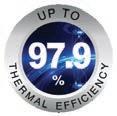
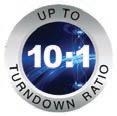











A CONDENSING BOILER FOR EVERY COMMERCIAL APPLICATION
400 500 700 850
Choosing the right heating system is crucial to maximizing a building’s energy savings and environmental impact.
HIGH EFFICIENCY CONDENSING BOILERS www.ibcboiler.com | 1-844-HEAT IBC
Hockey arena
adds VRF for comfort and efficiency.
FEATURES
14
HYDRONICS

STRATEGIC MODIFICATIONS
Ideas for altering existing hydronic circuits to accommodate lower water temperatures from modern heat pumps.
By John Siegenthaler 19
30 MECHANICAL MINUTES CIRCUIT PURGING
John Siegenthaler shares the basics on getting the air out of modern closed-loop hydronic circuits and keeping it out.
By
Logan Caswell
24
AHR EXPO PREVIEW

AHR
HEATS UP ATLANTA
The 2023 edition of the ARH Expo includes an expanded program of educational opportunities, and the 2023 AHR Innovation Award winners are revealed.
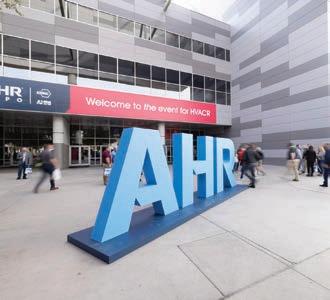 By Logan Caswell
By Logan Caswell
32
HVAC
SOCIAL MEDIA: HELP OR HINDERANCE?
The rise of ‘helpful’ do-it-yourselfers on YouTube is generating new troubleshooting challenges for HVAC service technicians.
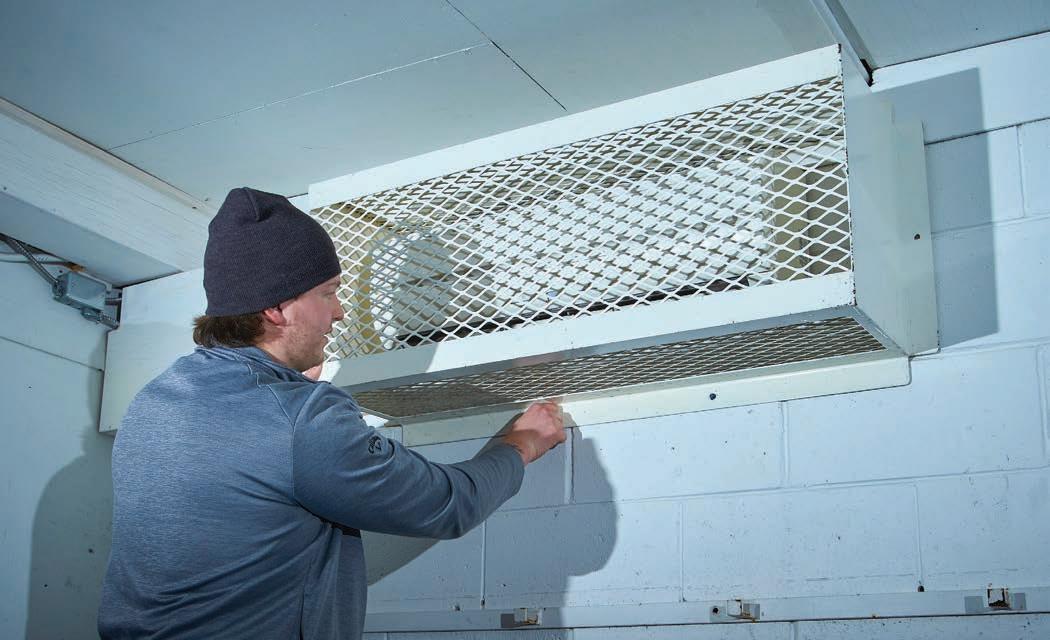 By Ian McTeer
By Ian McTeer
36 24
CONTINUED ON P6 19
NO.
HPACMAG.COM DECEMBER 2022 | HPAC 5
CONTENTS DECEMBER 2022 / VOL. 96
7
in Bridgetown, Nova Scotia
CASE STUDY
HOCKEY ARENA EMBRACES VRF
A retrofit project at the community arena in Bridgetown, Nova Scotia leads to a cost-saving opportunity.
By Dan Vastyan
PRODUCTS
TEST & MEASUREMENT TOOLS

Featuring a few of the latest products available that are essential for troubleshooting, commissioning or servicing HVAC/R and plumbing jobs.
By HPAC Staff
PLUMBING PROBLEM SOLVING SOLUTIONS

To improve your troubleshooting abilities and decision making skills, here are some things you need to understand.
By Steve Goldie
REFRIGERATION
HEAT PUMP TROUBLESHOOTING TIPS
If you’re familiar with servicing AC units, the heat pump has just a couple more items that may need to be addressed.
By Dave Demma
6 HPAC | DECEMBER 2022 HPACMAG.COM 39 44 32 DEPARTMENTS 8 UPFRONT 9 NEWS FEATURE Warrior Plumbing wins award. 10 INDUSTRY NEWS 41 MECHANICAL SUPPLY NEWS 43 PEOPLE 51 TOOLS OF THE TRADE 53 TRAINING 53 THE SOURCE 54 CALENDAR CONTENTS
36
39
44
48
DECEMBER 2022 / VOL. 96 NO. 7


TRUST IN THE PROCESS
I
HAD MY WINTER TIRES PUT ON THE OTHER DAY BY MY NEIGHBOURHOOD
MECHANIC. Edmar owns a small two-bay shop, and it’s a very busy time for him, but he always remembers my name and tells me how much he and his crew like my little 2004 Toyota Tacoma. “That truck is going to run forever,” he reminds me almost everytime.
I keep returning to Edmar because it’s convenient and because he has con vinced me through his actions and words over the years that he’s both knowl edgeable and passionate about what he does. He’s gained my trust.
For plumbing and HVAC/R companies working in service roles, having the trust of customers is obviously essential to repeat business and referrals, and gaining trust is best attained through actions, not slogans on a website.
The topic of troubleshooting is a recurring theme throughout this issue, and in his article Steve Goldie shares what he believes it takes to be a good trou bleshooter: “I think one of the things that sets people apart is, those who truly excel at their chosen profession don’t simply learn how to, but they learn the why … when we truly understand why things work the way they do, not only can we do great work in the first place, but we can much more easily figure out the solutions when something goes wrong.”
People in the trades learn how things work and how to fix common prob lems, but understanding how everything works together and being able to fol low the chain of events, cause and effect, is necessary for great problem solving, and being able to explain it in simple terms is great customer service.
I recently saw a social media post by Gary McCreadie (@hvacknowitall) where he diagnosed a faulty gas valve on a furnace (after a previous company tried replacing a control board and walked away when that didn’t work). Within his post McCreadie notes that he’s surprised the first company didn’t try to sell the homeowner a new furnace, and that point was picked up a lot in the comments section. Many in the trade see that strategy all too often.
There’s a lot of trust to be gained by doing the work, showing the work, and working in the best interest of the client. It does the entire industry a service.
McCreadie, by sharing his process, is showing another way trades people are lifting each other up in this industry.
Also in this issue, Ian McTeer takes on the other end of social media, the bad — homeowner do-it-yourselfers who feel empowered to show how to selfservice their HVAC equipment and share their work on YouTube. Ian points out some real problems. While it can’t be avoided, this industry needs to get the message out there that servicing expensive, essential, and potentially harm ful technology needs to be handled by skilled trades.
“When these people do finally call on professional help, it’s in our interest to let them know the danger and share our knowledge and gain their trust,” says McTeer. Every interaction with the public is an opportunity to display knowledge, build trust and reinforce the professionalism of this industry.
As we wrap up another year, the team here at HPAC magazine wishes every one a safe and joyous holiday season. May your days be merry, and may your winter tires keep you safe on the roads. <>
– Doug Picklyk, Editor
Reader Service
Print and digital subscription inquires or changes, please contact Urszula Grzyb, Audience Development Manager
Tel: (416) 510-5180 Fax: (416) 510-6875 Email: ugrzyb@annexbusinessmedia.com Mail: 111 Gordon Baker Rd., Suite 400, Toronto, ON M2H 3R1
EDITOR ASSOCIATE EDITOR
ASSOCIATE PUBLISHER NATIONAL ACCOUNTS

MEDIA DESIGNER ACCOUNT COORDINATOR PUBLISHER COO

Doug Picklyk (416) 510-5218 dpicklyk@hpacmag.com
Logan Caswell (416) 728-6209 lcaswell@hpacmag.com
David Skene (416) 510-6884 dskene@hpacmag.com
Amanda McCracken (647) 628-3610 amccracken@hpacmag.com
Emily Sun esun@annexbusinessmedia.com
Kim Rossiter (416) 510-6794 krossiter@hpacmag.com
Peter Leonard (416) 510-6847 pleonard@hpacmag.com
Scott Jamieson sjamieson@annexbusinessmedia.com

PUBLICATIONS MAIL AGREEMENT NO. 40065710
Heating Plumbing Air Conditioning (established 1925) is published 7 times per year by Annex Publishing & Printing Inc. HPAC Magazine is the leading Canadian business publication for the owner/manager of mechanical contracting businesses and their supply partners.
ISSN: 0017-9418 (Print) ISSN 2371-8536 (Online)
Contents Copyright © 2022 by Annex Publishing & Printing Inc. may not be reprinted without permission.
SUBSCRIBER SERVICES: To subscribe, renew your subscription or to change your address or information please visit us at www.hpacmag.com
Subscription Price per year: $44.00 (plus tax) CDN; Outside Canada per year: $112.00 US; Elsewhere: 1 year $123.00 (CDN); Single copy Canada: $5.00 CDN. Heating Plumbing Air Conditioning is published 7 times per year except for occasional combined, expanded or premium issues, which count as two subscription issues.
MAIL PREFERENCES: From time to time we make our subscription list available to select companies and organizations whose product or service may interest you. If you do not wish your contact information to be made available, please contact us via one of the following methods: Tel: 416-442-5600 ext. 3552, Fax: 416-510-6875 or 416442-2191; E-mail: blao@annexbusinessmedia.com; or by mail: 111 Gordon Baker Rd., Suite 400, Toronto ON M2H 3R1
Annex Privacy Officer Privacy@annexbusinessmedia.com Tel: 800-668-2374
HPAC Magazine receives unsolicited materials (including letters to the editor, press re leases, promotional items and images) from time to time. HPAC Magazine, its affiliates and assignees may use, reproduce, publish, re-publish, distribute, store and archive such unsolicited submissions in whole or in part in any form or medium whatsoever, without compensation of any sort.
NOTICE: HPAC Magazine, Annex Publishing & Printing Inc., their staff, officers, directors and shareholders (hence known as the “Publisher”) assume no liability, obligations, or responsibility for claims arising from advertised products. The Publisher also reserves the right to limit liability for editorial errors, omissions and oversights to a printed correc tion in a subsequent issue. HPAC Magazine’s editorial is written for management level mechanical industry personnel who have documented training in the mechanical fields in which they work. Manufacturers’ printed instructions, datasheets and notices always take precedence to published editorial statements.
Proud member of:
www.hpacmag.com
8 HPAC | DECEMBER 2022 HPACMAG.COM < UPFRONT
BUSINESS AWARD
WINS
The 2022 Indigenous Business Awards (IBA), presented annually by the BC Achievement Foundation, honoured Warrior Plumbing of North Vancouver with its Business of the Year award in the 11-plus person enterprise category.
The business awards recognize the contributions of extraordinary Indigenous businesses and entrepreneurs across B.C., while also helping to elevate connec tions between the province’s Indigenous and non-Indigenous economies. A total of eight businesses, entrepreneurs and community-owned enterprises were se lected this year.
Founded by Curtis Thomas in 2010, Warrior Plumbing is a fully owned and op erated Indigenous mechanical contract ing company providing residential builders, developers and homeowner cus tomers across Greater Vancouver with plumbing, gas fitting and HVAC solutions.

Attracting young Indigenous workers to the mechanical contracting profession is key driver for Warrior. The company of fers a training program giving new staff an opportunity to gain the education and skills required to obtain their Red Seal certification and a career in the trades.
Warrior is also aligned with various causes the company believes in and pri oritizes helping people within the TsleilWaututh First Nation ensuring its members stay safe and comfortable. warriorplumbing.ca
GUIDE: MEASURING HEAT PUMP EFFICIENCY
The Atmospheric Fund (TAF), a regional climate agency that invests in low-carbon solutions in the Greater Toronto and Hamilton Area (GTHA), has com missioned A Guide to Measurement and Verification of Heat Pump Retrofits in Multi-Unit Residential Buildings.

Prepared by Rushby Energy Solutions, the guide was developed to help building owners in the the tracking of a heat pump’s performance to ensure the investment in a heat pump system is providing the expected energy savings.
Designed to support TAF’s Retrofit Accelerator program, which aims to in crease the pace, scale, and ambition of retrofits in the GTHA and beyond, the guide outlines measurement and verification procedures and recommenda tions for space heating retrofits in electrically-heated multi-family residential building. However, the group notes that many of the principles can also be ap plied to heat pump retrofits in gas-heated buildings as well. taf.ca/publications
The report highlights issues impact ing specialty contractors such as work force management, technology and profitability to help businesses better understand industry trends.

Key Canadian findings include:
• Canadian subcontractors report that 40% of their margin erosion can be tied to rework.
REPORT HIGHLIGHTS BUSINESS ISSUES FOR TRADE CONTRACTORS
Canadian specialty trades contractors report lost profits due to unpaid change orders and rework, while a lack of work ers is also affecting their ability to com plete projects. These findings are part of new report from Dodge Data & Analytics, “Top Business Issues for Specialty Contractors” sponsored by Procore.
With the goal of helping trade contrac tors better understand the key trends im pacting their businesses, Dodge surveyed 537 trade contractors (mechanical, elec trical, plumbing, steel and concrete) from four regions (Canada, U.S., UK and Australia/New Zealand) with a focus on three key business issues: profitability, workforce and technology.
• an average of 39% revenue loss is due to change orders that are not in voiced—this is above the global aver age of 30%.
• 42% of Canadian subcontractors re port that more than 20% of workers’ time is currently spent on low-produc tivity tasks.
• Canadian contractors expect 38% of their company’s workforce to retire in the next five years and are amongst the ones most severely impacted by labour shortages.
• Overall, 39% of respondents say that they still use whiteboards, spread sheets and other outdated processes, such as tracking down information or documenting information on paper. procore.com/en-ca/ebooks
HPACMAG.COM DECEMBER 2022 | HPAC 9
Curtis Thomas (front, centre) founded Warrior Plumbing in 2010.
WARRIOR PLUMBING
SEE THE LATEST NEWS @ HPACMAG.COM Continued on p10
INDUSTRY NEWS
RIGHT TIME GROUP GROWS IN NORTHERN ONTARIO
Right Time Group has acquired Sudbury, Ont.-based Northern Air & Mechanical Systems, known locally as 669-Heat.

Providing residential heating, cooling, air quality and hot water services to homeowners in Sudbury and surrounding areas, the management and employees of 669-Heat will join the Right Time team.
This marks the 15th acquisition com pleted by Ontario-based Right Time which is majority-owned by San Francisco-based Gryphon Investors. The group continues to add residential HVAC and home services locations to its network, now with 22 locations across Ontario, Manitoba, Saskatchewan, Alberta, and British Columbia. right-time.ca
IHOR CAP RECEIVES RED SEAL AWARD OF EXCELLENCE
NEW MCAC PRESIDENT
The Mechanical Contractors Association of Canada (MCAC) hosted its Annual National Conference in Halifax, Sept. 28 –Oct. 1, and welcomed Derek Ermen, vice president of Ermen Plumbing and Heating in Moncton, New Brunswick as the new president and chair. Ermen takes over from Wayne Davidson of Davidson Bros. Mechanical Contractors (Burnaby, B.C.) who served as president/chair for 2021-22.
The Halifax gathering was the first in-person MCAC Conference since 2019. Member of the 2022/23 executive committee include: Ermen, president/chair; Davidson, past president/secretary-treasurer; Charles Webb (Anderson Webb, Sarnia, Ont.), president-elect/vice president central; Charles Savoie (Black & McDonald, Halifax), vice president eastern; Brad Mason (ServcoCanada, Winnipeg), vice president western; and Tania Johnston, CEO MCAC. The next MCAC National Conference is set for October 18-21, 2023 in Napa Valley, California. mcac.ca
ENWAVE AND RIOCAN FORM PARTNERSHIP
NEW HARMONIZATION APPROACH TO DEVELOPING MODEL CODES
Ihor Cap, Apprenticeship Manitoba.
The Canadian Council of Directors of Apprenticeship (CCDA) has selected Ihor Cap, a program develop ment officer and train ing standards coordinator at Apprenticeship Manitoba, as the recipi ent of the 2022 Red Seal Award of Excellence.
The award is given annually to one ap prenticeship authority staff member from across the country who demon strates leadership in the development of and promotion of apprenticeship and skilled trades certification.
Cap has demonstrated a commitment to supporting skilled trades and appren ticeship throughout his 32-year career at Apprenticeship Manitoba. He was the first program development officer to de velop standards and curriculum for the Gasfitter A and Gasfitter B trades in Manitoba, both of which subsequently became Red Seal trades. red-seal.ca

The federal government has announced a new approach to developing construc tion codes in Canada. The new federalprovincial-territorial (FPT) governance model replaces the existing Canadian Commission on Building and Fire Codes, a committee of volunteers that was re sponsible for code development in Canada since 1991.
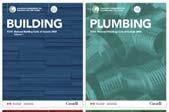
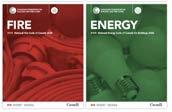
The new FPT governance model in cludes the Canadian Board for Harmonized Construction Codes that will be the decision-making body for the codes, and they will be overseen by a new Canadian Table for Harmonized Construction Codes Policy.
These groups include members of the National Research Council and repre sentatives from federal, provincial and territorial governments.
Canada’s National Model Codes are developed on a five-year cycle. The 2020 editions were delayed and re leased in March 2022. The next editions are currently expected to be published in 2025. nrc.canada.ca
Enwave Energy Corp. has entered a new partnership with developer RioCan Real Estate Investment to advance the implementation of geo exchange energy solutions at cer tain new RioCan developments.
One of the first projects to be de ployed is at the RioCan Leaside Centre project in Toronto (815–845 Eglinton Ave. E.), where a district scale geoexchange solution is being implemented for the 1.3 million sq. ft. mixed-use development project.
Expanding on its experience in developing and operating largescale geoexchange district energy projects, earlier this year Enwave launched its GeoCommunities plat form, specifically focused on lowcarbon solutions for single-building and community residential develop ments like the Leaside project.
Since the launch, Enwave has also partnered with two other develop ment projects in the Greater Toronto area to deploy stand-alone geoex change solutions for residential tow ers that are now under construction. enwave.com
10 HPAC | DECEMBER 2022 HPACMAG.COM < INDUSTRY NEWS
Continued from p9
Derek Ermen, MCAC President 2022/23.
INFRASTRUCTURE BANK
COMMITS $25 MILLION
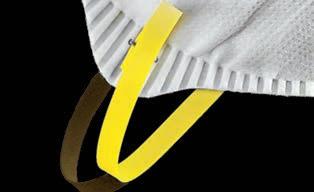
TOWARDS MODERN NIAGARALED RETROFIT PROJECT
The Canada Infrastructure Bank (CIB) and Modern Niagara Group have announced an agreement to retrofit 945 Princess St. in Kingston, Ont. The CIB is committing $25 mil lion in financing, roughly half the cost of a large-scale retrofit of a 1940’s era 220,000 sq. ft. commer cial building.
The commercial space will be up graded to reduce carbon emissions by more than 80% by replacing the existing fossil-fuelled steam boiler heating system with electrified sys tems such as heat pumps with gas boiler back-up along with enhancing control systems and insulation.

Construction for the retrofit proj ect has begun and is expected to be completed by 2024. cib-bic.ca
NEW GRANT FOR SWITCHING FROM FUEL OIL TO HEAT PUMPS
The Government of Canada has an nounced a $250 million investment for the Oil to Heat Pump Affordability (OHPA) Grant, a new stream to add to the exist ing Canada Greener Homes Initiative. This program is designed help house holds move to electric heat pumps in stead of home heating oil. National in scope, the OHPA grant's design reflects the fact that a higher proportion of Atlantic Canadians use oil as their primary source of heat.
The OHPA Grant focuses on house holds that need it the most and is de signed to benefit low-to-median-income Canadian households. According to a government release, average, home owners who switch from oil to cold-cli mate heat pumps to heat their homes would save between $1,500 and $4,700 per year on home energy bills. Eligible homeowners will be able to
combine OHPA Grants with funding from existing federal, provincial, territorial and utility programs.
Recognizing that many low-to-moder ate-income homeowners are often un able to carry upfront costs associated with the installation of heat pumps, money will be delivered to Canadian households before the installation of their new heat pumps, and the program will feature robust verification pro cesses to ensure the program is being used as intended.
Canadian households may be eligible for the OHPA Grant if their household has an after-tax income at or below the median household after-tax income, as defined by Statistics Canada’s Low Income Measure Threshold (e.g., $53,140 after-tax for a family of four) and if their home is oil-heated as of January 2023.
The OHPA Grant will be available start
HPACMAG.COM DECEMBER 2022 | HPAC 11
BREATHE EASY OVER 2,850 SAFETY PRODUCTS IN STOCK π SHIPPING SUPPLY SPECIALISTS ORDER BY 6 PM FOR SAME DAY SHIPPING COMPLETE CATALOG 1-800-295-5510 uline.ca HPAC_Uline_Dec22.indd 1 2022-11-10 2:23 PM
22_003848_HPAC_DEC_CN Mod: October 20, 2022 9:35 AM Print: 11/08/22 8:34:15 AM page 1 v7
Continued on p12
ing in early 2023 through the Canada Greener Homes Initiative Portal. The $2.6-billion Canada Greener Homes Initiative (CGHI) already provides eligible homeowners with up to $5,000 to retro fit their home to reduce energy use and save money.
Homeowners can benefit from both the OHPA and CGHI grants to replace their oil furnace with heat pumps. nrcan.gc.ca
JOHNSON CONTROLS SECURES NET ZERO PROJECT WITH DEFENCE DEPARTMENT
Johnson Controls has secured its fifth project with Canada’s Department of National Defence in support of the DND’s 2050 Net Zero Goals. The effi ciency initiative at 2nd Canadian Division Support Base (CDSB) Valcartier is designed to reduce greenhouse gas (GHG) emissions by 58% during the length of the 14-year contract and en ergy costs by $1.5 million annually.
This project brings the Canadian DND’s total projected energy cost sav ings generated in collaboration with Johnson Controls to $8.2 million annu ally, as well as a combined 37,000-ton reduction in GHG emissions per year.
Previous collaborations between Johnson Controls and Canada’s Defense Department includes CFB Bagotville, CFB Petawawa, CFB Kingston and CFB Halifax.
Johnson Controls will deploy renew able energy and energy efficient solu tions in 81 buildings on the base. This includes updating lighting, heating and cooling systems, boilers and chillers, as well as deploying geothermal systems.
The project is structured under a 14year energy performance contract, wherein all base updates are funded by guaranteed energy savings. The project is anticipated to achieve its full energy cost reduction potential by April 2026, upon its completion. johnsoncontrols.com.
PLUMBING PRO PROMOTING TRADES TO KIDS
A Philadelphia-area HVAC/R and plumbing indus try rep is aiming to improve the perception of the skilled trades among kids with the launch of his first children’s book, The Water Came To A Stop, the beginning of a proposed series of books called Next Up Trades.

“Next Up Trades represent an illustrated chil dren’s book series which teaches children that the skilled trades are noble, necessary, and appreciated,” says author Ryan Kiscaden in a media release about the book launch.
Kiscaden, who works for Watts, notes that it’s his own “personal mission statement” that led to the creation of the series. “I want the plumbing, HVAC/R and electrical trades to grow, and it starts by changing the perception of the skilled technician,” he says.
The content of the series focuses on celebrating problem solving and help ing others. Future lessons from the series will be teaching in-the-field best practices such as job cleanliness, safety, creativity and hygiene.
The first book, told in a residential plumbing setting, targets 4 to 8 year olds.
The story has Dean enjoying his birthday with his friends and family when his home’s water unexpectedly stops. The family calls Gomer Gopher and Flo Fish from Next Up Trades, and in the end Dean and the family acknowledge their admiration for those involved in the plumbing trade.
The next books are slated to focus on HVAC (The Air Came To A Stop) and electrical (The Power Came To A Stop) featuring the same characters.
“The Next Up Trades series goes after a generation earlier than middle- and high school-aged students to introduce parents, guardians, and children to the industry,” says Kiscaden.
“The reality is that in a time of a comfort emergency, skilled tradespeople are essential to solving our problems through their expertise in quality instal lations and maintenance. This series is my way to tell the industry’s story.”
The Water Came To A Stop is available in paperback and eBook versions through Amazon. Up to 2% of the post-profit proceeds will be donated to SKILLSUSA. kiscadenconsulting.com
CANADA INFRASTRUCTURE BANK, LULU ISLAND ENERGY COMPANY AND CORIX CLOSE ON $175 MILLION DISTRICT ENERGY INVESTMENT
The Canada Infrastructure Bank (CIB), Lulu Island Energy Company (LIEC) and Corix Infrastructure Inc. (Corix) have closed on a district energy expansion project in Richmond, British Columbia.
Under the agreement, the CIB will pro vide $175 million for the LIEC City Centre District Energy Utility project. It will en able expansion to more than 170 new residential and mixed-use commercial
development sites in the area by 2050, using low-carbon heat recovered from a local regional sewer system.
When complete, the project is ex pected to reduce greenhouse gas emis sions by one million tonnes by 2050, with the amount of connected space to the district energy system increasing 10–fold to 50 million sq. ft.
The LIEC is a municipal corporation wholly owned by the City of Richmond. It was established to implement and oper ate district energy utility systems in Richmond’s city centre. cib-bic.ca
12 HPAC | DECEMBER 2022 HPACMAG.COM
< INDUSTRY NEWS Continued from p11



MARCH 8, 2023 International Women’s Day A LIMITED NUMBER OF SPONSORSHIPS ARE AVAILABLE. REGISTRATION OPENS JANUARY 2023. Women in Construction is jointly presented by the Construction Magazine family at Annex Business Media. CONTACT DAVID SKENE FOR DETAILS dskene@annexbusinessmedia.com • 416-510-6884 GLASS CANADA As the owner of a construction business, what are you doing to increase the representation of women in your organization? Do you even know how to get started?
to
Women
Construction
event geared toward business owners
the construction industry. Our experts and panelists will provide you with helpful advice and actionable insights for starting—or further advancing—your pursuit of greater female representation in the workforce. VISIT www.women-in-construction.ca AND CLICK Virtual Event 3RD ANNUAL EVENT
Make plans
attend
in
2023 on March 8, a virtual
in
STRATEGIC MODIFICATIONS
Existing series distribution systems can be modified to accommodate lower water temperatures generated from modern heat pumps. BY JOHN SIEGENTHALER
Hydronic heat pumps continue to gain market share as hydronic heat sources, and this category includes both geothermal water-to-wa ter heat pumps as well as air-to-water heat pumps.
All heat pumps perform better when the “temperature lift” from the low temperature source to the higher tem perature load is reduced. In the case of air-to-water heat pumps there’s very lit tle any designer can do to influence the temperature of outside air (other than placing the unit on the sunny side of the building to get a slight “micro cli mate” benefit on sunny days).
Those designing geothermal sys tems can opt for larger earth loops (e.g., more pipe in the ground), but there’s a rapidly diminishing return on the added cost of doing so.
The load side of the system is where designers can provide greater influ ence on overall system performance.
Keeping the required supply water temperatures as low as possible will optimize the coefficient of performance (COP) of any hydronic heat pump. My recommendation is that any distribu tion system supplied from a hydronic heat pump should be able to deliver design load heat output without ex ceeding a supply water temperature of 120F (49C).
STARTING POINT
There are sure to be increasing circum stances where system designers are asked to add a heat pump to a “legacy” hydronic system. The most common
Figure 1. Two typical system designs with fin tube radiators.
configuration is likely to be a boiler sup plying fin-tube baseboard heat emit ters. Figure 1 shows two common piping configurations for such systems (a series loop or split series circuit).

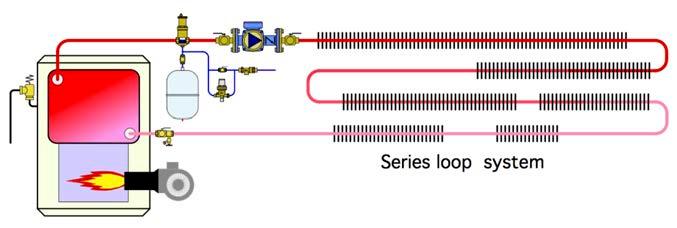
Most of these systems were origi nally designed around relatively high supply water temperatures, in the range of 180F to 200F at design load conditions. Such temperatures are well beyond the working range of currently available hydronic heat pumps.
It is possible to salvage these legacy high temperature systems for use with hydronic heat pumps, and here are two approaches that can be used individu ally or together.
1. Lower the building’s design heating
load though improvement to its ther mal envelope (e.g., added insulation, new windows, air sealing, etc.).
2. Add heat emitters to the hydronic distribution system.
When building envelope improve ments are used the reduced supply wa ter temperature at design load can be estimated using Formula 1.
Formula 1: Where: Tnew = supply water temperature at

14 HPAC | DECEMBER 2022 HPACMAG.COM < HYDRONICS
Continued on p16
SUMMIT 2023
Goes West!
Following SOLD-OUT events in Ontario since 2013
Modern Hydronics – The Summit is heading west of the Rockies in 2023!
Mark your calendars for Sept 21 and head to the Hard Rock Casino - Port Coquitlam BC!
As a professional involved in the hydronics trade you will:
• Hear from our top-notch hydronic speakers as they cover the most current technologies and application opportunities in the hydronic space.

• Spend quality time with the manufacturers and distributors of the best products in the market today to discuss solutions for your projects.
• Network with your peers and establish new relationships
• Be on hand for the announcement of the 2023 Sweet Heat hydronic installation contest winners – will you be one of them??


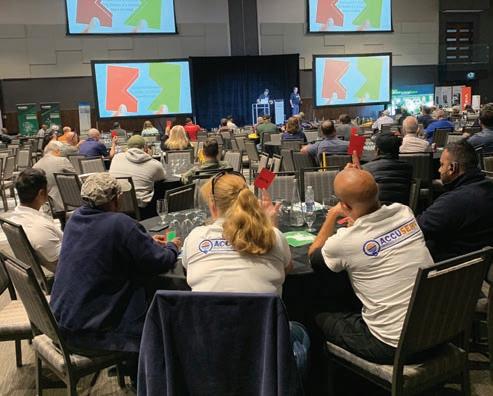
• And, of course, be well fed!
If you are into hydronics –you need to be there!
Registration will open in March 2023 so stay tuned. For a glimpse of the most recent, sold-out, Summit (September 2022) visit www.modernhydronicssummit.com

design load after building envelope im provements (F)
Tin = desired indoor air temperature (F)
Qnew = design heating load after building envelope improvements (Btu/h)
Qexisting = existing design heating load (before improvements) (Btu/h)
TDe = existing supply water tempera ture at design load (before improve ments) (F)

For example, assume an existing building has a design heating load of 100,000 Btu/h, based on maintaining an interior temperature of 70F. The ex isting hydronic distribution system uses standard fin-tube baseboard and requires a supply water temperature of 180F at design load conditions. Also assume that improvements to the building envelope will reduce this de sign load from 100,000 Btu/h to 70,000 Btu/h. The new supply water temperature for the existing distribu tion system under design load condi tions can be estimated as:
Any further reduction in building load would have a corresponding drop in de sign load supply water temperature. This approach makes sense when the option of adding heat emitters is im practical.
PIPING MODS
The other option for lowering the re quired water temperature to allow for good heat pump performance is to add heat emitters. The fundamental con cept is simple: the greater the total sur face area of the system’s heat emitters, the lower the required water tempera ture for given rate of heat output. Adding baseboard, panel radiator, ra diant panel circuits or fan-coils to an existing series loop system presents several challenges:
1. Can the existing piping loop be con figured for the new emitters?
2. Will the temperature drops created by adding more heat emitters in a se ries cause significant drops in output to downstream emitters?
3. Will the head loss of an extended se ries loop be too high for the existing
circulator, or perhaps even a new higher head circulator?
Rather than simply extending an ex isting series loop system I recommend converting it to a hybrid parallel/series system. Figure 2 (above) shows an ex ample in which the original series loop system has been “segmented” into parallel piping branches, and new heat emitters have been added.
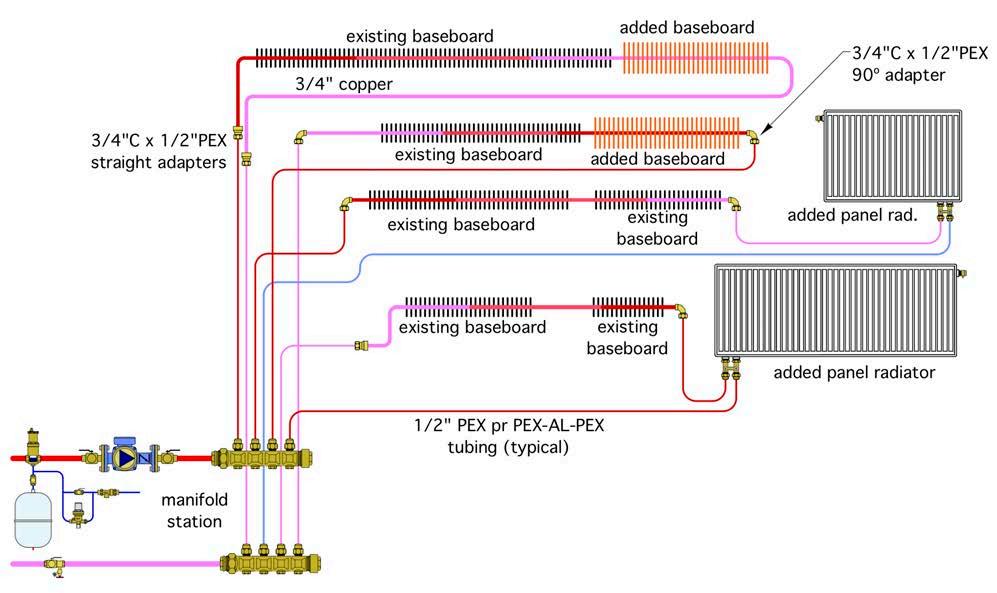
In this example, the revised system has four parallel branches. Each branch has two or three heat emitters, some original and some new. As much of the original copper tubing as possi ble has been retained, and ½-in. PEX tubing has been used to connect the copper tube segments back to a mani fold station. The latter is easier and faster than trying to splice the new pip ing segment back together with copper tubing. All the PEX is routed back to a manifold station.
MAKING THE CUTS
There are several factors that will influ ence how the new heat emitters are
16 HPAC | DECEMBER 2022 HPACMAG.COM Continued from p14 < HYDRONICS
Continued on p18
Figure 2. A modified distribution system, adding heat emitters to an existing series loop system with fin tube radiators.
HEATING UP TO 150,000 BTU/h DHW UP TO 210,000 BTU/h
NCB-H
High capacity, High performance combi-boilers
Navien NCB-H high efficiency combi’s bring the highest level of whole house comfort to any size home...big or small
• Highest DHW maximum BTUs in residential condensing combi-boilers... up to 210,000 per hour
• Highest DHW flow rate @ 70°F rise... up to 5.4 gallons per minute
• Highest number of BTU sizes for the North American residential combi-boilers
• Highest residential combi-boilers domestic hot water turndown ratio...15:1
• Highest residential combi-boilers heating turndown ratio... up to 11:1
• Highest number of built-in zone controls for valves or pumps... up to three
• Highest full lineup 2" venting lengths... up to 65 feet
• Highest number of cascade capable units with up to 15 tankless water heaters
• High altitude certification... up to 10,100 feet (NG or LP)
Aim high with Navien NCB-H combi-boilers... To learn more visit Navieninc.ca
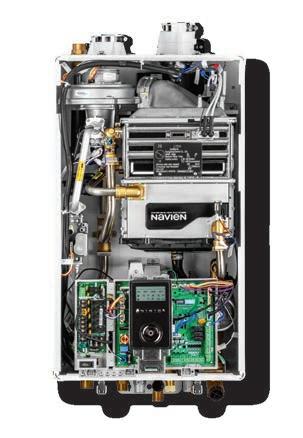
The leader in condensing technology...does it again.

The highest selling brand of condensing combi-boilers takes home heating and DHW to new heights
piped into the system. They include the following:
• Where can installers access the ex isting piping?
• Are there building areas that need more heat output?
• Does it make sense to potentially di vide the distribution system into sep arate zones?
• Are there multiple heat emitters within a given space that can remain intact as one of the parallel branches?
• What are the flow resistance charac teristics of the new heat emitter rela tive to those of the existing heat emitters?
• What type of control will be used to regulate heat output to each zone of the distribution system?
There is no universal approach. Every situation must be evaluated indi vidually while weighing these factors to
determine the best fit for that project. The hybrid parallel/series system will likely reduce the head loss of a system relative to the series loop, which will re sult in a higher total system flow rate (assuming the same circulator is used). It also allows heat emitters near the end of the loop to operate at a slightly higher average water temperature and therefore slightly higher heat output.
FINAL POLISH
One of the benefits of converting the series loop to a hybrid parallel/series system is that each parallel branch could be operated as a separate zone. Flow through each zone could be regu lated by including thermostatic radia tor valves in each branch circuit, or by adding valve actuators to the manifold station. Figure 3 (above) shows an ex ample where thermostatic radiator valves (TRVs) are used.
The modified system now includes a variable speed pressure regulated circu lator set to maintain a constant differen tial pressure. The circulator automatically changes speed as the TRVs open, close, or modulate flow. A hydraulic separator has been added to isolate the pressure dynamics of the variable speed circulator from the remainder of the system.
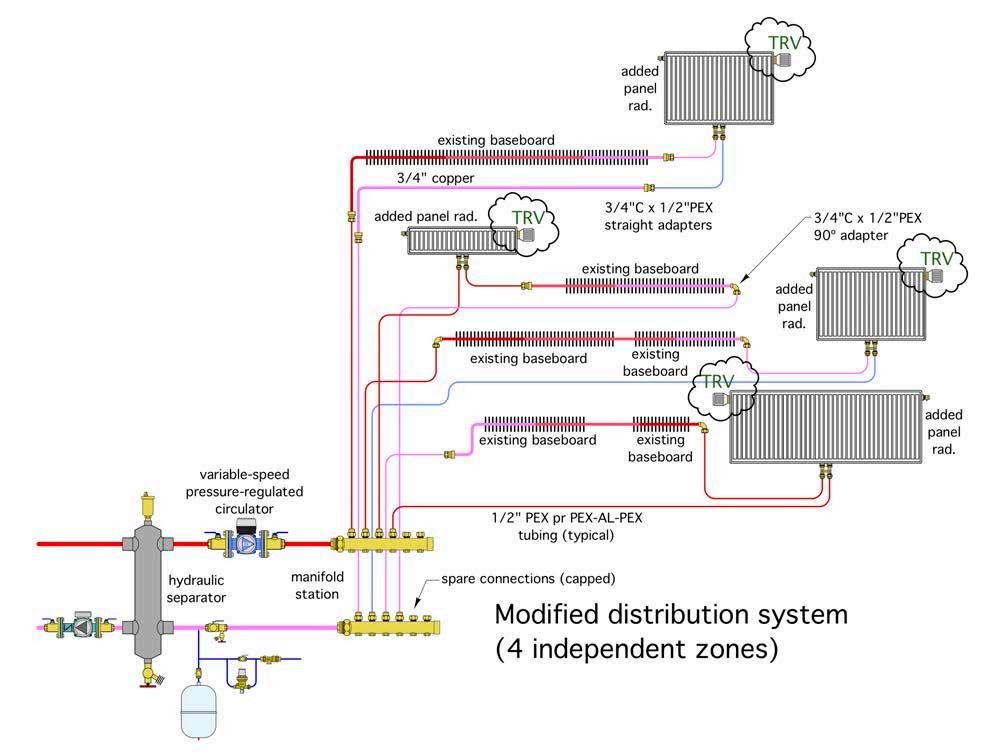
There are virtually limitless possibili ties of how these concepts can be used, but what's clear is these concepts, along with modern hydronic hardware, allow legacy hydronic systems to be up graded for lower temperature opera tion and compatibility with the growing market for hydronic heat pumps. <>
John Siegenthaler, P.E., has over 40 years experi ence designing modern hydronic heating systems (hydronicpros.com).

18 HPAC | DECEMBER 2022 HPACMAG.COM Continued from p16 < HYDRONICS
Figure 3. One concept for modifying a series loop into a multi-zone system.
CIRCUIT PURGING
CASWELL
The latest installment of HPAC magazine’s 30 Mechanical Min utes free webinar series focused on hydronic circuit purging, getting air out of closed-loop systems. In this epi sode, HPAC editor Doug Picklyk was joined by regular contributor and hydron ics expert John Siegenthaler. This edi tion was sponsored by Wolseley Canada.

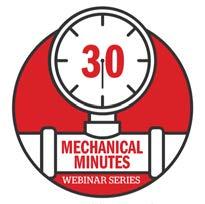
The introduction of air into hydronic circuits can be problematic and a source of frustration for industry pro fessionals and end users. Careful at tention to purging and following best practices will only improve the quality of work in the field.
According to Siegenthaler, systems are meant to operate air-free with just water. There are a few issues with air in a hydronic system. For example, corro sion due to oxygen in contact with fer rous metals, sound issues, inadequate flow rates (if there’s a mixture of air bubbles and water), and in some cases, air binding in systems that could pre vent hot water from the heat source from reaching the heat emitter.
“Today’s systems make it easier to remove air so these problems don’t oc cur,” acknowledged Seigenthaler, who
Figure 1. A modern purging valve for forced water purging.

then described how old legacy meth ods of air removal often relied on air passively rising to high points in the system where a venting device would typically be located.
Newer technology, although now con sidered ‘traditional,’ for removing air from systems include the air bleeder valves located at a high point on the baseboard heater or panel radiator. These methods still rely on air passively rising to high points in the system where manual venting would be required.
He also described the ‘air scoop’, typically a cast iron device that creates a high point in the piping system and has internal baffles that help direct air
bubbles up into a air vent that will burp the air out of the system. While these air removal systems are still available, he notes that they don’t work as well as modern micro-bubble separators.
“When you put cold water into a sys tem, 3% to 4% of the H2O is made up of dissolved molecules of oxygen, nitrogen and carbon dioxide that cannot be seen,” explained Siegenthaler. It’s these molecules that form the micro bubbles in water that we’re trying to capture, the dissolved oxygen in particular. “When we de-aerate the system properly that oxygen content is of no concern.”
Today’s micro-bubble air separators have a central chamber where micro bubbles will adhere to the surfaces of a coalescing medium—in effect the mi crobubbles cling to a surface and com bine into larger bubbles and then rise upwards to a float-type vent where the air is automatically ejected.
Typically, these air separators are placed at high-temperature locations on the supply side of the boiler because as the water is heated the gas in the fluid will expand the gas molecules. “You can think of hot water going through an air
HPACMAG.COM DECEMBER 2022 | HPAC 19 HYDRONICS >
John Siegenthaler shares the basics on getting the air out of modern closedloop hydronic circuits. BY LOGAN
Continued on p20
HPAC editor Doug Picklyk (left) is joined by John Siegenthaler to discuss getting the water out of hydronic set ups.
HYDRONICS
from p19
separator almost like squeezing a sponge. You’re squeezing the dissolved air out of the water, capturing it and ejecting it from the system.”
Siegenthaler then spoke about forced air purging at start up and the use of a modern purging valve, installed in the circuit close to where the cold water will enter the system. He showed a photo of a purge valve (Figure 1) which includes an inline ball valve to stop the water flow ing to the boiler, and a 90-degree side outlet port with a hose connection on it and a ball valve leading to that port.
In forced water purging the water en tering a system, either for the first time or to refill, acts like a piston, pushing most of the air ahead of it. The incom ing water must move at least two feet per second to be effective and prefera ble higher, suggests Siegenthaler.
In a schematic he shows the makeup cold water coming in first through a backflow preventer, then through an open bypass valve (or fast-fill) to allow the water to avoid a pressure reducing valve, then the water rushes through the boiler and the rest of the circuit, pushing the air out until the water flow reaches the purge valve which is closed to inline flow, and the outlet port is open with a hose connected and led to a large bucket or drain.

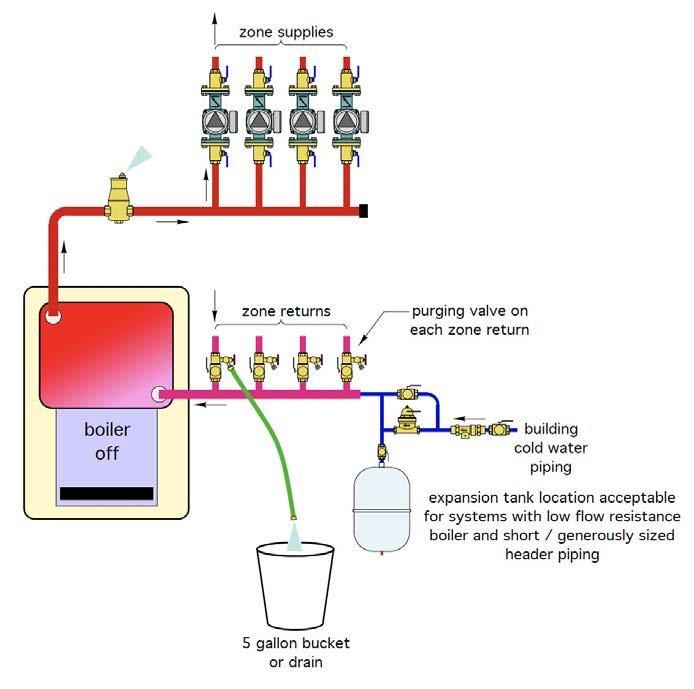
According to Siegenthaler, the forced water purging might remove over 95% of the air from the system, but the “clean up”, the removal of the dis solved air, is the function of the micro bubble air separator.
He also presented schematics for a multi-zone piping configuration (Figure 2) with purge valves located on the re turn side of each zone. To purge air from this system, you close off each zone’s isolation valves individually. Once one zone is purged and the water is released into the bucket, you close it and move on to the next zone, continu ing through the entire circuit. He sug gests this should only take a few
Figure 2. Schematic of a purging set-up for a multi-zone system.
Figure 3. Set up for a primary/secondary circuit purging system.
20 HPAC | DECEMBER 2022 HPACMAG.COM
<
Continued
minutes, providing you have good water pressure.




In a primary/secondary system (Figure 3), Siegenthaler shows a purge valve on the return side of each secondary cir cuit. He suggests against placing a ball valve in between the two closely-spaced tees leading to and away from the sec ondary circuit, as that valve is only useful for purging, that’s it. Plus it will create pressure drop between the two tees, and the concept of closely-spaced-tees is to get the pressure drop between them to as close to zero as possible.
Feels Like Summer Contest

Placing the purge valve on the return side of the secondary circuit allows the isolation of each circuit if you need repairs, and there is no pressure drop between the tees.

Typically, the process is to purge the primary first, and then work from one secondary to the next and so on through the different circuits.
Seigenthaler mentioned that systems with glycol should use a double-port purging valve (Figure 4) with two 90-de gree side ports with hose connections and a valve to close the flow between the two connections. Also, you don’t want to have automatic makeup water on a system like this because it would dilute the antifreeze concentration if there is a leak in the system.
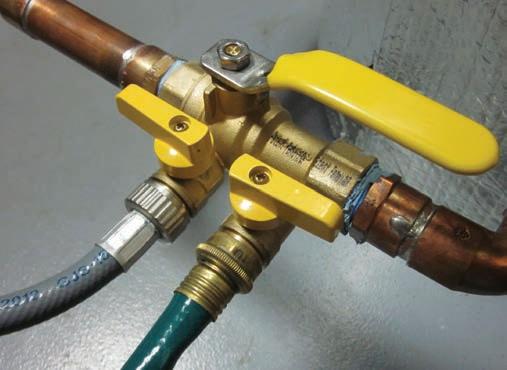


To get a pre-mixed glycol solution into the system (Figure 5 ), he recommends having the mixture in a bucket with a sub mersible pump, and pump the fluid into the system. Siegenthaler warns, “I learned this lesson the hard way: make sure you fasten that return hose into the container somehow, because with a strong pump that hose can take off like a deranged elephant’s trunk.”
Siegenthaler also shared some field experiences regarding air entrapment in systems. He notes that many small zone cir culators come with a small spring-loaded check valve insert.
on p22
Deliver the heat with Brock & ENTER TO WIN! YOU COULD ALSO WIN A WILDCARD PRIZE!
Brock’s Feels Like Summer Contest purchase and ballot entry period is October 1, 2022 – January 31, 2023. Sales of products will be tracked by Wolseley. Customers must have a Wolseley account and must be in good credit standing to qualify for prizes. There are six (6) regions for prize entries. Fo r full contest details and prize details, please visit wolseleyexpress.com/brock. Purchase a Brock heat pump, gas furnace or air handler for your chance to win an additional unit for future installation. Scan Me HPAC_Wolseley_Dec22.indd 1 2022-11-24 9:24 AM
Figure 4. Example of a double-port purging valve set up. Continued
Figure 5. Example using a double-port purging valve to set up a glycol system.

When you install the circulator vertically, there is a potential for trapped air to accumulate under that check valve. That air will tend to displace water in the vicinity of the cir
culator’s impeller; when that pump starts up, there is a mix ture of air and water around the volute, and the impellor may not be able to ‘get a grip’ on that fluid.
To avoid this, he suggests a good forced air purge will get most of the bulk air out of the system, also that check valve could be removed from the circulator, and perhaps install a check valve a foot or two above the circulator, or install the cir culator with horizontal or downward flow and that orientation change can prevent those air pockets from accumulating.
Also, when you start a circulator with cold water you may hear churning sounds from the circulator caused by gaseous cavitation—micro bubbles forming around the eye of the im peller. Siegenthaler suggests that his trapped air should be eliminated with good forced water purging when loading the system along with the installation of a modern micro bubble separator somewhere in the system.
Siegenthaler also addressed a number of viewer questions regarding issues like proper placement for air and dirt sepa rators, positioning of expansion tanks and more.
To view this entire episode or to catch up on previous epi sodes of of 30 Mechanical Minutes head online and visit: hpacmag.com/tech-pulse or youtube.com/@hpacmag. <>
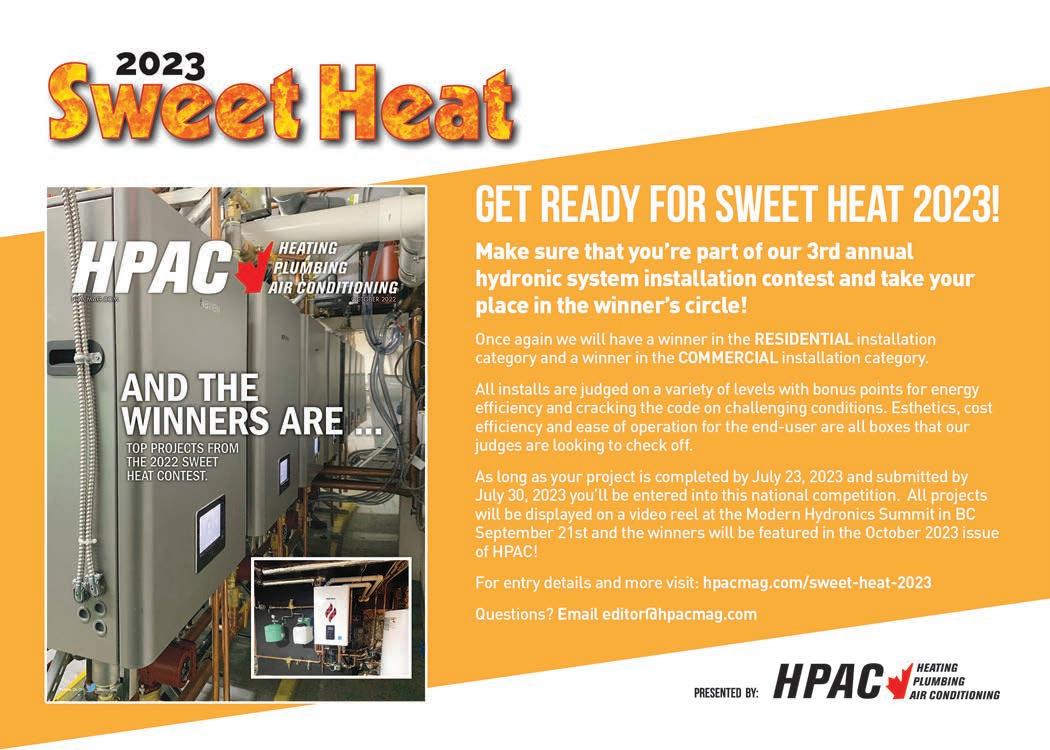
22 HPAC | DECEMBER 2022 HPACMAG.COM Continued from p21 < HYDRONICS
HPAC_SweetHeat_HP_Dec22_CWM.indd 1 2022-11-22 3:48 PM
Easy
+ No combustion with only electric heating elements

+ Plug-and-play small appliances that can be installed practically anywhere
+ Fast and simple installation with no venting and gas connections required

+ Low maintenance with fewer moving parts than gas/oil boilers
+ Various output ranges & sizes (4 to 14.4 KW) make an ideal solution for energy-efficient homes
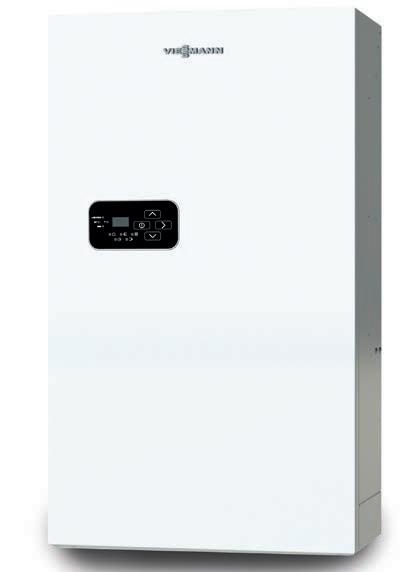

+ Quiet operation can be installed in the most noise sensitive areas Introducing Vitotron 100 Electric Boilers
Plug-and-Play Hydronic Electric Heating Experience Viessmann reliability with the convenience of electric heating. For more information
viessmann.ca electric heating solutions made easy
AHR HEATS UP ATLANTA

2023 edition of the ARH Expo includes an expanded program of educational opportunities. BY
LOGAN CASWELL
The 2023 Air-Conditioning, Heat ing, and Refrigeration Exposi tion (AHR Expo), the largest annual North American gathering of HVAC/R industry professionals, returns with a three-day conference and expo at the Georgia World Congress Center in Atlanta from February 6 to 8, 2023. The AHR Expo is co-sponsored by ASHRAE (the global society of heating, refrigeration and air conditioning engi neers) and the Air Conditioning, Heat ing, and Refrigeration Institute of America (AHRI).
EXPANDED LEARNING PROGRAM
Like every edition of the AHR Expo since 1930, manufacturers and suppli
ers from around the world will be on hand to showcase their new product line-ups, feature innovations and pro vide technical support for attendees.
This year the educational program ming at the Expo will include more than 200 free seminars for both novices and seasoned professionals, ranging from technical HVAC/R topics to the latest in dustry trends and business issues.
In addition, while the educational programming in the past has run over the first two days of the Expo, this year the schedule has been extended into Wednesday.
“The education program has grown tremendously in recent years,” says the show manager, Mark Stevens, in a
DATES AND TIMES
Monday, February 6, 2023
Hours: 10 am – 6 pm
Tuesday, February 7, 2023
Hours: 10 am – 6 pm
Wednesday, February 8, 2023
Hours: 10 am – 4 pm
www.ahrexpo.com
media release. “The HVAC/R industry is changing and growing quickly and in ways that are new to us all. We’re talk ing about training a new workforce to replenish a wave of retirements while simultaneously taking on initiatives re lating to environmental efficiency, in
24 HPAC | DECEMBER 2022 HPACMAG.COM
< AHR EXPO PREVIEW
PHOTOS COURTESY AHR EXPO
AHR 2023 Innovation Award Winners
Announced
Once again the 2023 International Air-Conditioning, Heating, Refrigeration Exposition (AHR Expo) Innovation Award winners have been selected prior to the kickoff of the event in a preview of the best in new technology for the year ahead.. The winners for these annual awards are selected by a panel of third-party ASHRAE judges who evaluate entries based on innovative design, creativity, appli cation, value, and market impact.
The innovation awards program helps serve as a metric to see the year-to-year growth in the industry and showcases good examples of how manufacturers are growing the industry in unique ways.
The 2023 AHR Expo Innovation Award Winners were selected in 10 industry cat egories, including: building automation, cooling, heating, indoor air quality, plumb ing, refrigeration, software, sustainable solutions, tools and instruments, and ventilation.
COOLING
Opteon XL41 is a non-ozone depleting, low global warming potential refrigerant replacement for R-410A in residential and light commercial air conditioning, and scroll chiller applications. This product maximizes the benefits of the transition to HFO refrigerants while minimizing the impact of the transition. Opteon TM XL41 provides a 78% re duction in GWP from R-410A, while remaining compatible with all R-410A residential and com mercial applications and lubricants, reducing the re-design effort for OEMs, and reducing the learn ing curve for the technicians in the field.
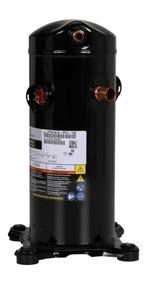
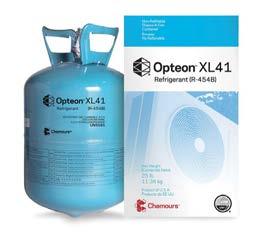
HEATING
Emerson’s ZPSK7 scroll compressor is a product line of 1.5 to 5-ton two-stage compressors suited for residential and light com mercial HVAC applications. The compressors can operate at 100% capacity or as low as 65% based on heating/cooling demand. When a partial load is needed, bypass ports inside the compres sion chamber open which partially unload the compressor, thereby consuming less energy at light loads and avoiding stops and starts. When demand increases, the modulation control valve is activated, sealing the bypass, and shifting capacity to 100%. The ZPSK7 two-stage compressor can run at lower capacity without stopping, ensuring air continues flowing over the coil and the filter for improved humidity reduction and air quality.
PLUMBING
The 536 series PresCal HP piston-type pressure reducing valve family from Caleffi ensures stable, high-precision water pressure control while withstanding severe inlet pressure or punishing downstream water hammer. It’s perfect for staged pres sure control or demanding applications that are fraught with extreme pressure fluctuations. Being the bridge be tween a building’s water main and its distribution piping, a PRV experiences pressure fluctuations on both down stream and upstream sides. These fluctuations can be of sufficient magnitude to cause premature fatiguing and fail ure of a rubber diaphragm design. The higher the incoming pressure, the more severe the fluctuations and their effects frequently are. Instead of using a flexible, rubber dia phragm separating the high-pressure and low-pressure chambers inside the PRV, the PresCal HP uses a piston design.

BUILDING AUTOMATION
The Cielo Breez Max smart thermo stat for mini-split, window and porta ble air conditioners provides an AI-based engine to auto-detect AC type and model number. The Max unit is universally compatible with any brand or type of ductless air condi tioner. It works with a 5V adapter or can be hard-wired through 12/18/24 volts AC. It can also be powered with 12/18/24 Volt DC. All Cielo Breez Max are secured with TLS1.2 to authenti cate and encrypt data securely when transferred over a network. Max is compatible with Amazon Alexa, Google Home, SmartThings, IFFTT and Siri shortcuts.

INDOOR AIR QUALITY
The new Belimo room sensors mea sure temperature, humidity, dew point, and CO2 with or without an ePaper touch display. Integrated Near Field Communication (NFC) provides easy field adjustability, commissioning, re mote display capabilities, and trouble shooting even without power. These sensors are maintenance-free and pro vide long-term reliability for a comfort able room environment. Non-powered configuration allows customers to set these room sensors up before being in stalled in the field, eliminating techni cian frustration as the sensors can arrive on site fully configured and ready to communicate. Select models offer BACnet, Modbus, or MP-Bus, which en hances communication and reduces installation, cables, and terminal connections.
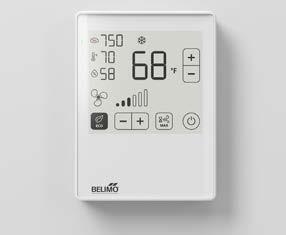
HPACMAG.COM DECEMBER 2022 | HPAC 25
Continued on p26
REFRIGERATION
The Copeland ZFW vari able speed scroll solu tion includes brushless permanent magnet (BPM) motor-based scrolls and variable frequency drives (VFDs) targeted for low-tem perature, stationary refrigeration applica tions. The variable speed scroll provides improved effi ciency, precision, flexibility and re liability, while Copeland variable frequency drives, the EVM/EVH se ries, complement Emerson com pressors and controls. It has double the capacity of a fixedspeed compressor of the same size while providing a 20–30% effi ciency improvement. To optimize ease of use, the Copeland EVM has been preconfigured for Emerson controls (iPro, E2, E3, Site Supervisor) and can be inte grated universally with any control ler. Available today with A1 refrigerants and moving toward A2L approval by 2024, the plat form offers design options for complying with current and future commercial refrigeration regulations.

door air quality, automation, cybersecurity, supply chain disrup tions, new business practices, etc. –there is no shortage of necessary discussions.”
Among the free learning opportuni ties are ASHRAE technical conference sessions, new product and technology presentations, and a selection of panel discussions with industry leaders.

among HVAC social media influencers will share the valuable role trade profes sionals can play in elevating the indus try and attracting the new generation of talent with online content.

On the social media panel will be Ontario-based influencer Aaron Bond (@ bond_aaron), and Vancouver-area’s Jessica Bannister (@hvacjess).
SOFTWARE
Built for mechanical engineers, the loadmodeling.tool software from cove.tool establishes peak cooling and heating loads to design and right-size a mechanical system us ing the EnergyPlus engine. This web-based tool supports cove. tool’s goal of providing the solu tions needed for the AEC industry to unlock productivity and address the climate crisis. The software is web-based, so mechanical engi neers can access the tool any where, including stored results, which means large files aren’t hav ing to be transferred or shared manually. Another function of the tool is that multiple people can log into a project and work on various tasks at the same time, increasing team efficiency.
In 2022 the Expo debuted its panel series, and returning this year, on Tuesday, Feb. 7, will be an HVAC/R State of the Industry Leadership Panel Discussion: Today’s Market, Challenges, Opportunities, and What’s Ahead, fea turing executives from ASHRAE, AHRI, the Heating, Air Conditioning & Refrigeration Distributors International (HARDI), National Comfort Institute (NCI) and the Plumbing, Heating, Cooling Contractors Association (PHCC). Last year’s edition was standing room only.
Also on Tuesday, is a panel discussing Decarbonization and the Future of HVAC. On Monday at 1 pm will be a dis cussion on the Basics of Refrigeration Changeover, and then on Wednesday is a new panel discussion featuring some Canadian content, HVAC & Social Media: Strengthening the Trade with a Community Mindset. This discussion
All new ASHRAE Conference semi nars that are free to all attendees in clude a comprehensive three-part series on Tuesday morning covering the latest on Low GWP Refrigerant Advancements for Decarbonization. The other free ASHRAE seminar of in terest to hydronics professionals is Efficiencies of Decentralized DHW Systems in Hydronic Conditioned MultiUnit Buildings, with Canadian Robert Bean among the presenting speakers.
From among the 90 other free indus try sessions, topics for business owners include: How to Build a Maintenance Agreement Culture that Powers Your Business All Year ; Pricing for Profit in Inflationary Times; Recruitment through Brand Marketing - How to Build Your Team by Building Your Reputation; Sell High-Perfomance HVAC Through Homeowner Education; and more.
EXPO
PHOTO COURTESY AHR
Continued
p25 < AHR EXPO PREVIEW
from
26 HPAC | DECEMBER 2022 HPACMAG.COM
Continued on p30
Attendees can listen in on live interviews at the Podcast Pavilion.
HVACR on an epic level

Register now at ahrexpo.com 2023 EXPO FEBRUARY 6-8
SUPERFLOWTM JUST GOT BETTER
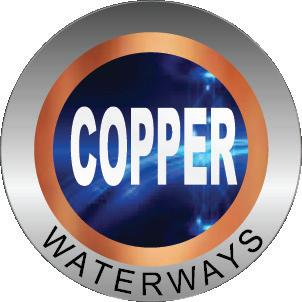
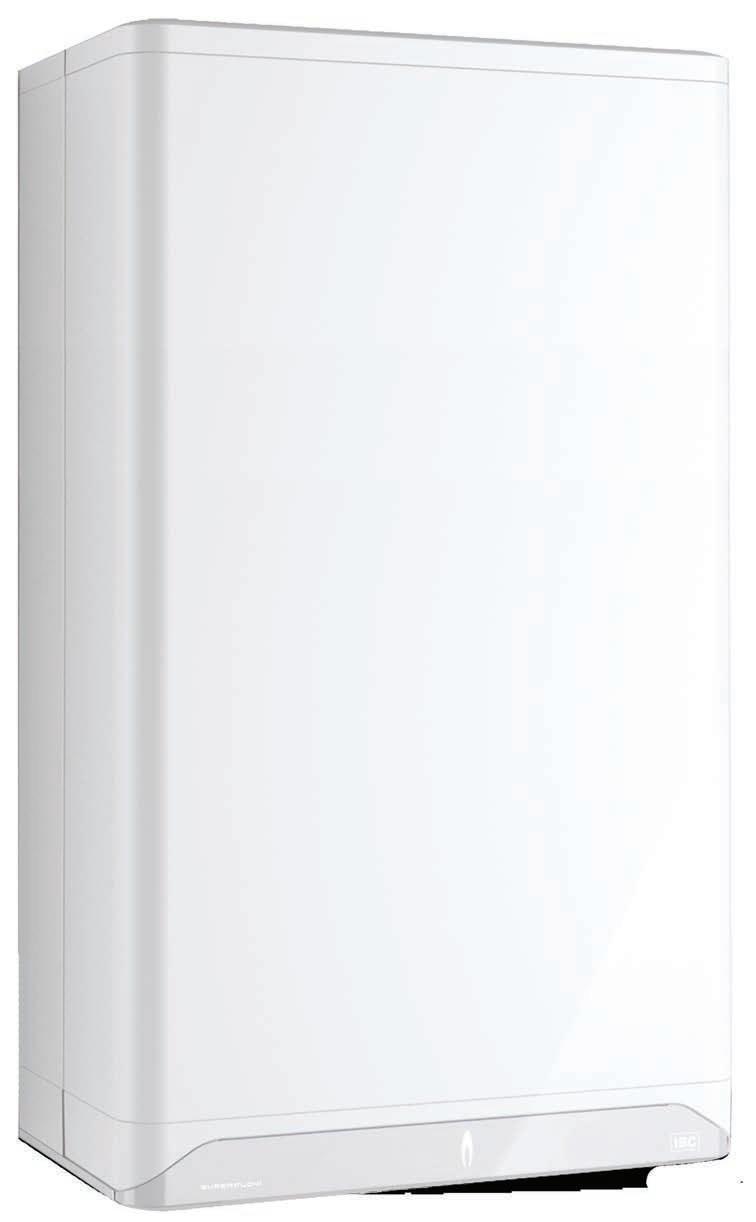

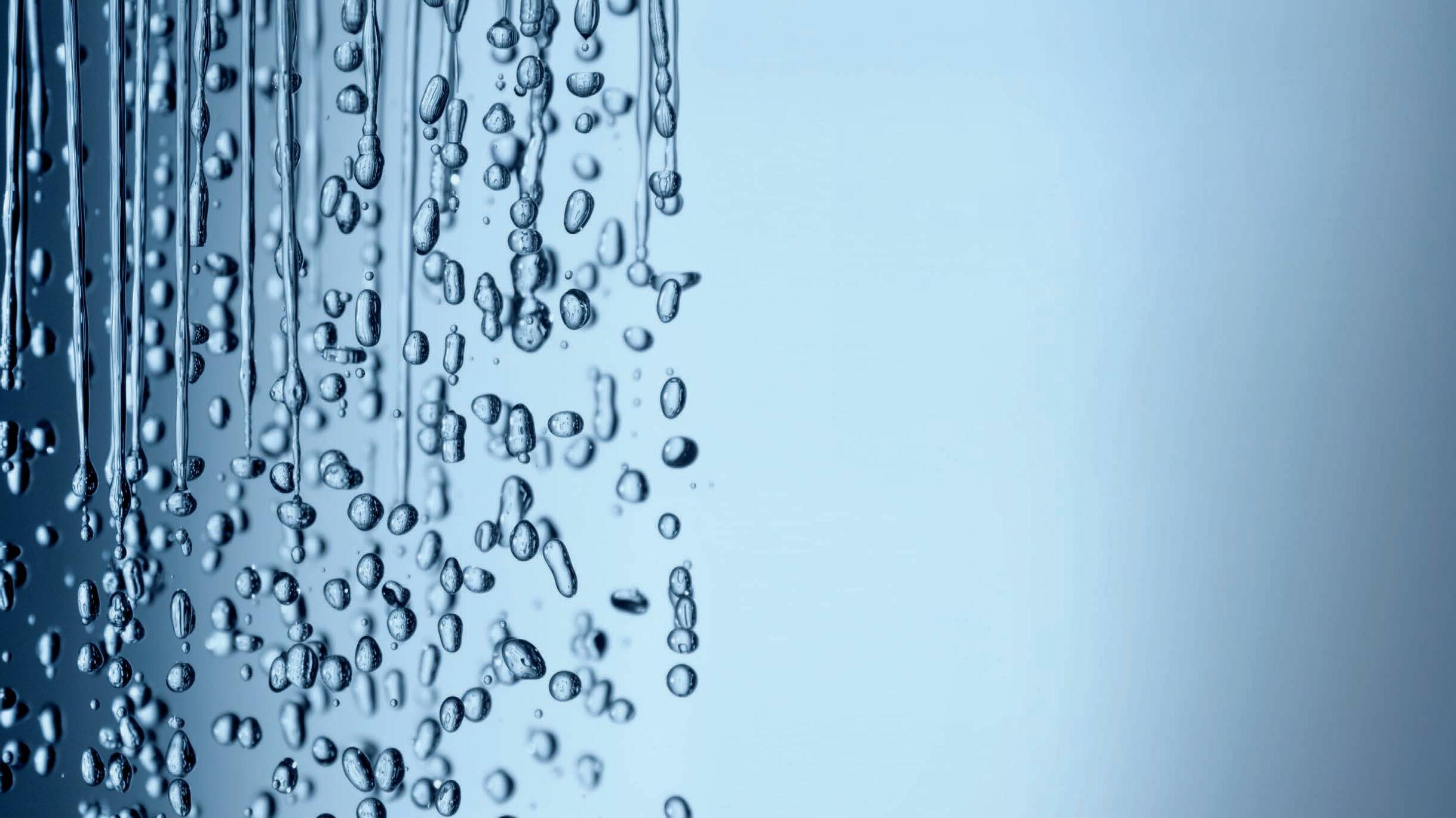
www.ibcboiler.com | 1-844-HEAT










COMBI SFC 99-1 | SFC 125-1 | SFC 199-1 SFC Combi NEW Efficiency Rating .90 U.E.F. (SFT 199-1) NEW Wireless Cascade Up To 8 Units NEW Recirculation Pump Control (SFT 199-1) NEW Factory Installed Inlet Strainer NEW 2” Vent Lengths up to 65’ NEW 2” Vent Adapter NEW Unparalleled Hard Water Performance (SFT 199-1) NEW Standard Pipe Size Connections NEW Extended Pipe Fittings TANKLESS SFT 199-1 SIMPLE • RELIABLE • EFFICIENT
SUSTAINABLE SOLUTIONS
System M from Taco is an air-towater heat pump system that provides heating, cooling, and DHW. The System M outdoor heat pump integrates with Taco’s exclusive indoor HydroBox to pro vide a complete system with just six pipe connections required. Its packaged design makes installa tion less intrusive; no refrigerant or gas lines are needed. System M integrates with almost any high-efficiency heating and cooling system and is a fit for both new construction and existing HVAC systems. The installation time is half of a typical air-to-water heat pump by eliminating the work to design, procure, and install of all the required hydronic components.

TOOLS & INSTRUMENTS
Navac’s NEF6LM BreakFree power flaring tool produces accu rate tubing flares quickly com pared to traditional flaring methods. Designed to perform re liably in harsh environments, NEF6LM allows one-button, onehand operation. The tool is equipped with a rechargeable battery that makes over 100 flares per charge. Refrigerant leak is a major service issue, espe cially for ductless VRF systems with many flared connections. This tool’s automatic flaring oper ation improves efficiency and ac curacy of tubing works and ultimately reduces refrigerant leaks in HVAC systems.

VENTILATION
SmartD’s Clean Power variable fre quency drive (VFD) changes the mo tor control landscape. By delivering a clean, sinusoidal signal it reduces motor system losses by up to 40% and extends motor lifetime in a compact footprint that can be de ployed without ancillary filters. The SmartD VFD also integrates widebandgap (WBG) semiconductors into its multi-level inverter architec ture and combines them with pat ented modulation algorithms to produce a pure-sine wave electrical signal without the need for external filters. WBG semiconductors have intrinsic characteristics that make them more efficient: on-state losses are 10-80% lower and switching losses are 9 to 30 times lower than stan dard transistors.

For refrigeration pros, Canadian, Trevor Matthews, the Refrigeration Mentor, is presenting Understanding the R744 (p)-h Diagram is Key to Understanding CO2 Refrigeration, on Tuesday, Feb. 7 at 10:30 am.
For engineering professionals, the ASHRAE Learning Institute (ALI) will offer a full slate of instructor-led seminars and short courses where professional development hours and continuing education credits will be available. These ses sions require registration and tuition fees.
Running in conjunction with the AHR Expo is the ASHRAE Winter Conference, and ASHRAE will be hosting technical or ganized tours of its newly renovated Net Zero global head quarters in Atlanta on three days: Sunday, February 5; Monday, February 6; and Tuesday, February 7, check the website ashrae.org for times and cost.
Also, on the AHR Expo show floor will be the New Product & Technology Theater where more than 145 presentations, each lasting approximately 20 minutes, are planned across all three days of the show. No fee or registration is required, and a complete schedule is available at ahrexpo.com or on the AHR Expo mobile app (ahrexpo.com/app).
NETWORKING

The attraction of industry trade shows is the ability to interact with a wide variety of like-minded HVAC/R professionals, and AHR Expo is no exception. This year’s show will once again al low the opportunity for attendees to grow existing relation ships and open doors to new networks and channels.
The Podcast Pavilion on the show floor is back for the 3rd year and showcases the industry’s trending podcasters from across North America. Attendees will have the opportunity to sit in and listen to these podcasters as they interview movers and shakers from across the HVAC/R industry and gain in sights into new products and hear how contractors from dif ferent regions are dealing with the industry today.
Show organizers are anticipating there will be more than 1,000 exhibitors at the 2023 event. Attendees who pre-reg ister can skip the registration line-up, and by downloading the MyShowPlanner app for iOS and Android visitors can map out their time on the show floor and their education program schedule in advance.
Further details about travelling to the Expo and instruc tions for downloading and using the 2023 AHR Expo App will be available on the AHR Expo website ahrexpo.com.
< AHR EXPO PREVIEW Continued from p26
30 HPAC | DECEMBER 2022 HPACMAG.COM


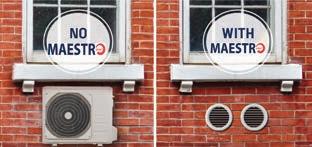
Come see us at Booth # BC1433
Maestro Wi-Fi App available
SOCIAL MEDIA: HELP OR HINDERANCE?
Some homeowners, looking for ways to save money, have dis covered it’s easy to purchase HVAC equipment such as thermostats, cooling systems, furnaces, air han dlers, humidifiers, mini split cooling, and heat pumps and even repair parts from online sources.

Probably nothing annoys a legitimate contractor more than a homeowner calling and asking for a cheap price to install his rogue equipment. Or, and this happens far too often, after a botched attempt at do-it-yourself (DIY) installation, the perplexed homeowner calls a local contractor looking for a low-priced bail out.
Or maybe, after some time has passed with the online-purchased unit doing yeoman’s work, it finally breaks down only to have the befuddled tech nician utter those famous words: “What have we got here?”
Technicians often mention service calls made by perplexed homeowners
after attempting to install a smart ther mostat bought from the local big box store. After botching the wiring and tak ing out a low voltage fuse, or even a control board, it proves that such ex pensive excursions into the DIY world simply don’t pay off.
My free-market instincts compel me to believe that people should be able to buy and install whatever they want, however, my technical background has convinced me that the uninitiated working with electricity, pressure ves sels and dangerous hydrocarbons are on a fool’s errand.
All of us, I’m sure, have tried our hand at tasks likely just out of our skill set range but seemingly not a moun tain too high. Whether it’s trying out a new recipe, building a shed, or rebuild ing an engine, to mention just a few, most DIYers are capable of producing an acceptable finished result that’s worthy of some boasting.
In my case, I wanted to have an 80 sq.
ft. concrete pad installed for my ma chine shed that included a landing pad for my lawn tractor and maintenance area. Having never worked with that much concrete before, I found a helpful concrete calculator on the internet (yikes, 54 30-kg bags required), and for tunately I found a ready-mix company willing to deliver small quantities.
After watching more than a dozen YouTube videos on how to prepare the form, screed the concrete and prepare the non-slip surface (plus a bit of help from some locals), I got my glorious concrete pad installed. And thank you to everyone on social media who gave me such great advice.
WHAT COULD GO WRONG?
Back in the pre-energy crisis days I met more than a few homeowners who hap pily maintained their own furnaces. They knew how to clean a pilot, could replace a thermocouple, diligently washed horsehair air filters, adjusted
WEERAWAT/ADOBE STOCK
32 HPAC | DECEMBER 2022 HPACMAG.COM
< HVAC
PHOTO:
The rise of ‘helpful’ do-it-yourselfers on YouTube is generating new troubleshooting challenges for HVAC service technicians. BY IAN McTEER
the fan belt and oiled (often over-oiled) the shaded pole belt drive fan motor.
Pre-Internet, one source of informa tion about heating systems was the lo cal library, yet according to my dear departed mother-in-law, a life-long li brarian, she could not remember direct ing even one anxious homeowner to the library stacks in search of knowledge re lated to coaxing a reluctant gas furnace back into heating action. It seems they never broke down during library hours.
It’s not as if our country hasn’t been through financial crises before, there have been several recessions in my lifetime alone. A bit of a perfect storm really, because the first thing that often happens in households facing mone tary shortcomings is any sort of main tenance goes by the wayside, be it automotive, general house mainte nance and especially mechanical sys tem upkeep.
The complexity of modern heating systems and a lack of well-trained tech nicians to care for all the furnaces, boil ers and heat pumps out there frustrates end-users waiting for help and then having to deal with large repair bills.
But, as those professionals doing mechanical maintenance every day of ten warn: “If you don’t schedule time for maintenance, your equipment will schedule it for you.”
As another winter arrives, heating systems across Canada are being switched on every day. And some are simply not going to answer the call, leading to the busiest time of the year for HVAC contractors, sales profession als, installers, and technicians. Be it ever thus, however, some equipment owners will try to coax their equipment back into life on their own with varying degrees of success.
When the heat doesn’t work, some shivering homeowners will try several methods to get the heat going again: call a friend, neighbour or relative for
advice or, in today’s world, visit social media websites.
Largely ignored are the instructions provided by the equipment manufac turer in the owner’s manual. Figure 1 is typical instruction found in most manu als. Notice the manufacturer suggests checking the air filter, adjusting the thermostat to call for heat, cycling the power supply, and importantly, check ing the vent terminals for blockage.
That’s it, otherwise, call for service.
The instructions do not advise the customer to remove panels and jump out switches or to monkey with control boards and other components. Social media, however, contains no end of vid eos showing all sorts of troubleshoot ing advice, and too much of said information ranges from irrelevant to downright dangerous.
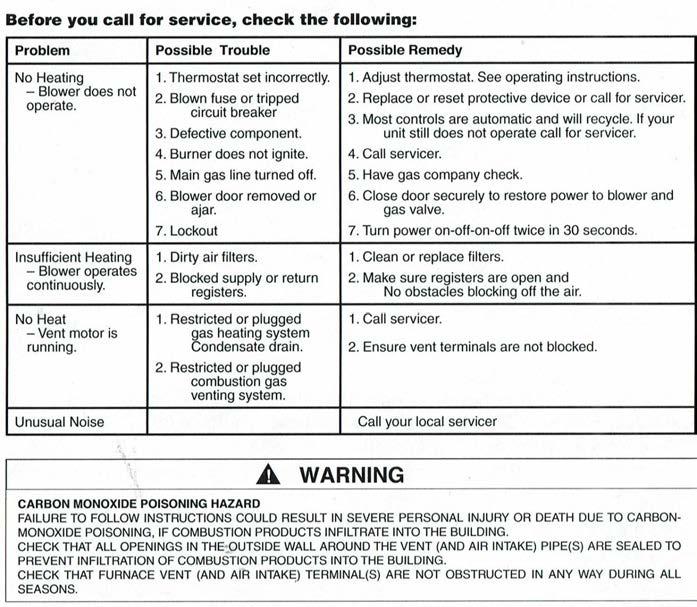
THE PERILS OF YOUTUBE
As research I watched several social media videos and some do give good advice to HVAC neophyte homeowners. Thus, following is my Social Media Top Nine Things to Check Before Calling for Service:
1. Check, clean or replace the furnace filter.
2. Make sure the thermostat is calling for heat.
3. Check the thermostat batteries if so equipped.
4. Check the appliance power supply switch and circuit breaker.
5. Try turning off furnace or boiler power supply for 30 seconds then restart.
6. Be sure all the registers and return grilles are open and unobstructed.
7. Visual inspection of a drain line, make sure it has not been pinched off by a heavy object.
8. Check outdoors, be sure the vent ter minals are unobstructed and clear of snow and ice.
9. Snow and ice must be cleaned, care fully, away from the gas meter and pressure regulator vent
HPACMAG.COM DECEMBER 2022 | HPAC 33
PHOTO TRANE FURNACE HOMEOWNER GUIDE Continued on p34
Figure 1. A typical furnace user’s manual for homeowner troubleshooting.
“It's not uncommon for people to look for a quick fix ... but a quick fix is not a long-term solution.”
STILL NOTHING – CHECK THE PRESSURE SWITCH
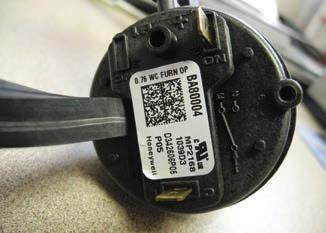
While mostly good advice, it could be that many homeowners are unaware of the location of gas meter pressure regu lators and vent terminals.
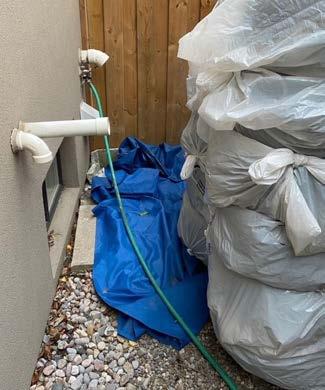
It could also be so snowy and icy that a trip outdoors to discover the location of a buried vent terminal and clean it out just isn’t going to happen.
If, for whatever reason, the regulator vent is blocked and the regulator loses its reference to atmosphere, it simply locks up: no more gas!
Furnace or condensing boiler flue pipe terminals buried in snow will cause pressure switches to do their job: prevent further combustion.
There are only three reasons why pressure switches (PS) on draft in duced furnaces will trip a code:
• PS is closed at the start of the cycle
• PS doesn’t close at the start of the cycle
• PS opens during the cycle
There are a plethora of specific faults associated with any of these failure modes and only trained technicians can troubleshoot these problems.
Blocked vents or chimneys can eas ily be responsible for a PS failing to close or open during a cycle, yet some of the social media videos I watched had naïve homeowner’s poking around with pressure switches.
One content creator even illustrates how to jumper the switch out of the cir cuit, yikes!
If the vent is blocked, even one fur nace cycle running with a bypassed pressure switch is one cycle too many.
Some creators suggest disconnect ing the PS tubing (check if it’s clear, not unreasonable) then have the viewer suck or blow (gently) into the tubing un til the switch can be heard to click, oh, it must be working now.
Except that a vacuum switch operat ing at a tiny fraction of air pressure can be destroyed by such a maneuver. A PS
Figure 2. Example of a pressure switch: 0.76 in. w.c.
and maybe that will solve the problem— it always seems to on social media.
How frustrating for the homeowner to discover that a clean flame rod still doesn’t jolt the reluctant furnace back into service. All it takes is a few seasons of lapsed maintenance and a tiny bit of dirt lodged in the cross lighter to prevent a combustion cycle. Removing the burner train and cleaning the cross light ers is not generally a topic for the con tent creators I’ve been watching.
It is not uncommon for people to look for a quick fix. I’m sure all of us have done so at one time or another de pending upon the circumstances. But a quick fix is not a long-term solution.
PROVING OUR WORTH
Figure 3. Vent terminal with little clearance risks having flue gas deflected back into the air intake.
working at – 0.76-in. w.c. for example, (Figure 2) will rupture with one strong puff from the human source of pressure (remember: one PSI = 28-in. w.c.).
Social media videos, at least the ones I have been watching, make no mention of the necessity to keep the area around the terminal completely unobstructed. In Figure 3, the terminal has plenty of ground clearance, but the nearby material will cause flue gas to be deflected back and recirculated into the air intake pipe.
Corrosive vapour in the intake air can contribute to burner corrosion, that, in turn, fouls the cross lighter and damages the flame sensor—cause and effect.
Well, if it isn’t the pressure switch, then it could be the flame sensor. That’s a reasonable conclusion, so go ahead and clean your flame sensor (Figure 4)
As I said, I do not blame homeowners for attempting to repair their own HVAC equipment, and some do manage to get the heat restored. I do wish that handy DIYers would refrain from hap pily producing videos detailing their HVAC adventures. When these people do finally call on professional help, it’s in our interest to let them know the danger and share our knowledge and gain their trust.
Among the thousands of non-profes sional HVAC troubleshooting videos ob served, here are my most memorable:
• A man correctly diagnosed a furnace control board failure and replaced it with one he bought from an online retailer, yet his furnace was filthy, and the obvious lack of maintenance likely means another no heat situa tion in the future.
• Another man replaced his hot sur face igniter, then the flame rod, then the control board on an elderly midefficient furnace while making mis leading comments (out of ignorance) about how the draft inducer works.
He did get the unit working again, but seemed casually unconcerned about unnecessarily replacing parts that were in good working order.
PHOTOS: I MCTEER
Continued from p33 < HVAC
34 HPAC | DECEMBER 2022 HPACMAG.COM
• Someone posing as an HVAC techni cian correctly diagnosed a control board failure. He managed to get a replacement part, but it came in a kit form and included a new hot surface ignitor. Thinking the new ignitor was “extra”, he replaced a board that now powered the existing ignitor with more voltage than it could tolerate. The video of him returning to install the ignitor he pocketed was not shown.
• The comment sections are always in
teresting. Other than numerous com plaints about slow service, high prices, and sales pitches like “You need a new furnace,” (which we truly do hear too often) this one caught my attention: “I was called at three o’clock in the morning on Christmas Eve to fix a boiler, and again on Christmas Day to do a forced hot air furnace and I’m not even a furnace technician…I’m just “Blessed” with the ability to fix things.” Undoubtedly, repairs (or necessary
replacement) will cost more than antic ipated by the DIYer especially when er roneously replaced parts need to be replaced by exact replacements.


For as much as my DIY concrete job saved me loads of money (Figure 5 ) and I’m thankful for exceptionally good advice from social media, it would be better if HVAC appliance services could be left to the professionals. And as pro fessionals we must earn the trust and understand that we are in a technical service business that requires our ex pertise and customer service. <>
Ian McTeer is an HVAC consultant with over 35 years of experience in the industry. He was most recently a field rep for Trane Canada DSO. McTeer is a re frigeration mechanic and Class 1 Gas technician. Have comments, Ian can be reached at imcteer@outlook.com



THE
HPACMAG.COM DECEMBER 2022 | HPAC 35 Ion™ 98 Variable-Speed Modulating Gas Furnace
Up to 98% AFUE
60,000 – 120,000 BTUh
Lifetime Heat Exchanger Limited Warranty
Warranty
•
•
•
• 10-Year No Hassle Replacement™ Limited
Pair it with a compatible air conditioner for full functionality and a full communicating system using the Ion™ System Control. For increased efficiency, look for the Ion™ 96 Variable-Speed Gas Furnace with Two-Stage Operation at keeprite.com.
ULTIMATE COMFORT
THE
AND POWERFUL WITH NO
HPAC_ICP_Oct22.indd 1 2022-10-04 1:02 PM
IN
COLDEST WEATHER EFFICIENT
HASSLE
Figure 5. Backyard DIY projects can work, but leave HVAC to the professionals.
Figure 4. A common suggestion on YouTube is to clean the flame sensor. Hmmm.
HOCKEY ARENA EMBRACES VRF
A retrofit project at the community area in Bridgetown, Nova Scotia led to a cost-saving opportunity.
BY DAN VASTYAN
Communities of all sizes across Canada rally around their local hockey teams and arenas, and in October of 2001 the small town of Bridgetown, Nova Scotia located in the Annapolis Valley, was forced to close down its Bridgetown Arena after an as sessment confirmed the community’s fears – the arena roof was deemed structurally unsound.
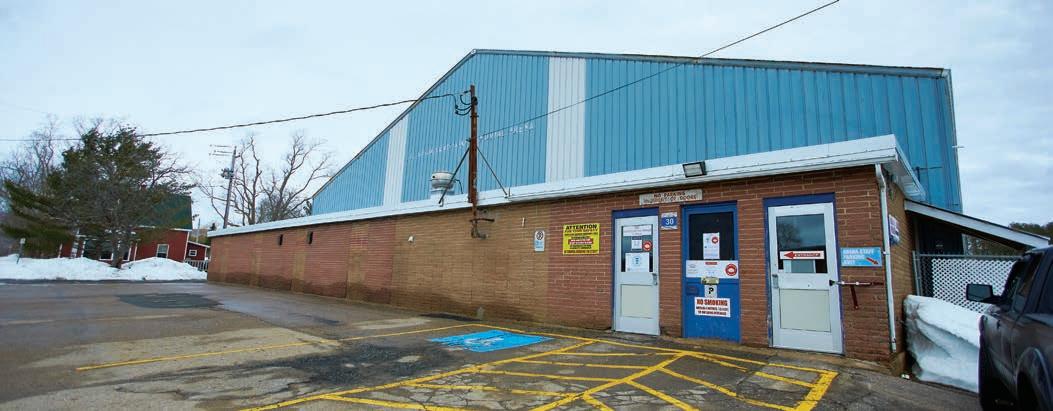
The arena needed repairs amount ing to $400,000, and by the following year a $110,000 provincial Recreation Facility Development grant was issued and the community then rallied and raised the remaining funds to get the project going.
The work was finally completed and the facility reopened in March of 2003, allowing local hockey teams and other recreational skaters to return to their home ice.
Locals and guests skated through many years with very few changes at
the re-opened arena. Then, in an effort to reduce the facility’s energy con sumption, the community sought an al ternative to the electric resistance fan coils that had always been used to heat various areas in the building out side of the rink itself.
“I skate at the arena, and we have an ad on the rink boards,” says Dale Comeau, founder and owner of Comeau Refrigeration in Bridgetown. The facility is near and dear to a lot of people and small businesses in this area, as it serves a variety of athletic programs beyond hockey and as a local gathering place.
HEAT PUMP PIONEERS
Comeau Refrigeration was founded in 2008, and in time the company be came a local Fujitsu dealer, after The Master Group, the region’s distributor, felt confident in Comeau’s ability as a seasoned refrigeration professional. He quickly realized the potential of the relationship and completed as much training as possible, while simultane ously marketing the product locally.
“We developed a reputation for in stalling mini-splits,” says Comeau. “A large part of that solution was, and is still, installing systems specifically de signed for their resistance to ice accu mulation on coils. This became a number one selling feature, along with efficiency and comfort. Our name came up in early conversations about improv ing the heating systems at Bridgetown Arena.”
According to Comeau, there were a number of issues that the Bridgetown
36 HPAC | DECEMBER 2022 HPACMAG.COM
< HVAC
ALL PHOTOS: DAVID GRANDY
The Bridgetown Arena was built in 1976, refurbished in 2003, and more recently received an investment in new heat pump technology.
“Energy efficiency is now our priority. After that, it’s comfort, reliability and control.”
Community Recreation Association (BCRA) wanted to address at the arena, most of which Comeau was already fa miliar with.
“Energy efficiency is now our prior ity,” says Steve Clayton, who’s been a BRCA board member since the 1970s, and chairman for the past 20 years.
“After that, it’s comfort, reliability and control. The original electric resis tance units are expensive to run, loud, inconsistent, and each one needs to be turned on and off manually, which was a chore for those of us who take care of the arena.”
Before submitting a bid, Comeau compared the use of Fujitsu mini-splits with light commercial VRF systems.
Both would have accomplished the desired result, but using VRF systems dramatically reduced the number of outdoor units and offered simple cen tralized control. One other bid was col lected for the project, but Comeau Refrigeration won the contract.
MAXIMUM EFFICIENCY
The 200- by 350-ft. arena features a single NHL regulation rink, kitchen, can teen, numerous changing rooms, rest rooms, meeting rooms, a Zamboni room along with several common areas.
BRCA wanted to retrofit all of the spaces that were originally heated–meaning everything but the rink itself.
“We used a -10C design temp at the arena,” said Comeau. “Environment Canada and the Heating, Refrigeration and Air Conditioning Institute of Canada (HRAI) suggest -18C, but the existing re sistance heat remains in place.
“I don’t think the resistance heat will ever be used, but it’s there [for backup]. Natural Resources Canada now gets involved with the engineering of sys tems like this and they help to procure grants, etc. They recommend system design to about 80% of the load, with electric resistance backup, allowing us to maximize heat pump efficiency.”
Comeau installed two, five-ton Airstage J-II VRF units on the ground-level outside
of the building, each fenced in to prevent any possible damage.
Inside in the building 14 zones are con ditioned with wall-mount units ranging from 7,000 to 9,000 Btu/h, and a single low-static ducted unit in the Zamboni room providing up to 14,000 Btu/h.
“Even though it’s usually unoccu pied, the Zamboni room must be kept warm,” explains Comeau. “Zambonis can cost six-figures, and they contain water, so keeping it well above freezing isn’t an option. That room also houses a lot of mechanical equipment for the
rink, so there wasn’t much room on the walls for an indoor head. That’s why we used the ducted air handler.”

ENERGY SAVINGS LEAD TO MORE IMPROVEMENTS
Installation of the heat pumps took several months as the team at Comeau Refrigeration worked around the are na’s schedule.
“The job was straightforward, though VRF systems can require more time to install than mini-splits, at least in a

HPACMAG.COM DECEMBER 2022 | HPAC 37
Continued on p38
HVAC technician Kenneth Tulley secures a custom fabricated security cage covering a wall-hung unit in a change room.
Comeau Refrigeration supports the community and advertises on the rink boards: (l-r) Jeff Shearer, Kenneth Tulley and Dale Comeau.
building like this,” says Comeau. “The facility is steel framed and most of the partitions are cinderblock. To run line sets and wiring, we had to drill some walls and work around the steel struc ture. Obviously, the refrigerant headers are inside the building as well.”
Many of the indoor units are pro tected by custom-fabricated metal cages to safe-guard from misguided hockey sticks, airborne helmets, etc., and where line sets are exposed, Comeau installed wooden trim around them for greater protection.

The control panel for all of the units is centralized in an upstairs office. Most of the spaces are kept at 20C. Because the original electric resis tance heaters were controlled manu ally, arena guests could turn up the heat to whatever pleased them. That’s no longer a concern.
“Everything about the new system is a major improvement,” says Clayton. “Temperatures are much more consis tent, and not having to walk around the building twice a day to turn the heaters on and off is a big plus. Best of all – our energy bills are much lower.”
Because the electric bill reflects to tal facility consumption, Clayton can’t pinpoint exactly how much the heating
costs have fallen. The rink’s mechani cal equipment was upgraded at roughly the same time as the heat pumps, and LED lighting was installed as well.
“The retrofit was a huge part of the energy improvements here,” notes Clayton. “The savings are much needed, too. After all, the facility was built in 1976, so there’s plenty of up keep. The retrofit avails funds for other projects. It was a fantastic change, and the systems work just as Comeau said they would.”
Looking forward, Clayton is hoping that some of the energy savings can be used to fund a large photovoltaic array installation on the arena roof.
VRF TRACTION
“This was our first VRF project,” says Comeau. “It didn’t present any major challenges, and if it had, we knew that we could rely on Master Group for tech support. So we went into this project with a lot of confidence.”
Since completing the Bridgetown Arena project, Comeau Refrigeration has found the flexibility of VRF to be a great advantage on other projects.
“We’re getting some VRF traction in the residential market,” he says. “The housing market in Nova Scotia is ex
tremely hot. People are buying proper ties way over asking price and making big investments and improvements. Some of these have been good fits for Airstage systems.”
According to Comeau, the biggest determining factor for use of VRF tech nology in residential applications is room count. With VRF, large houses with many zones can be served by a single outdoor unit, while it still makes sense to retrofit smaller homes with mini-split systems.
The federal government is promoting and offering grant programs for home owners to move from fuel oil, which is still common in some areas of Atlantic Canada, to electric heat pumps.

“Canada is taking bold steps toward decarbonizing the country,” says Comeau. “Heat pumps are a great tool to achieve that goal, and VRF systems open up a lot of opportunities that weren’t available for heat pumps just a decade ago.” <>
Dan Vastyan is president of Common Ground, specializing in marketing com munications and serving the North American construction industry with a focus on plumbing, mechanical and HVAC markets. danv@seekgc.com
38 HPAC | DECEMBER 2022 HPACMAG.COM Continued from p37
< HVAC
LEFT: Dale Comeau (l) and Kenneth Tulley of Comeau Refrigeration check one of the arena’s two single-phase five-ton Fujitsu J-II VRF units. They are located on ground-level and fenced in to prevent damage.
RIGHT: The Bridgetown Hawks girls’ hockey team takes to the ice for practice.
Testo has introduced the new testo 560i digital refrigerant scale with intelligent valve kit. It is designed for the charging of refrigeration sys tems, ductless mini-splits, and heat pumps. The testo 560i patented technology allows au tomatic charging according to the target super heat. The testo 560i is compatible with existing smart (550s / 557s / 550i) and Bluetooth (550 BT / 557 BT) digital manifolds, as well as the testo 115i, 549i, and 605i smart probes. testo.com
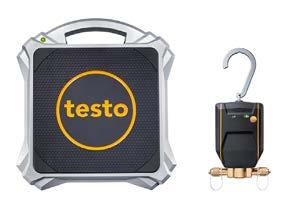
The NAVAC NMT1000 Thermal Imaging Cam era is designed for HVAC applications, empow ering technicians to troubleshoot HVAC sys tems through a new lens. Equipped with a 160×120 resolution thermal detector, it pro vides the technician with fast and accurate thermal imaging of the entire field of the mea surement vs. just spot temperature. 25 Hz re fresh frequency ensures smooth video and captures moving targets. It highlights the high est and lowest temperature spots in the field to assist with fast diagnosis and troubleshooting of HVAC systems. navacglobal.com

The Yellow Jacket TurboRecover is designed for fast and effective refrigerant recovery. The twincylinder, oil-less compressor and 1.25 hp Brushless DC (BLDC) motor ensure speedy re covery. Lightweight design and included shoul der strap allow for transportation to any jobsite. It offers dual-gauge design for monitoring of the system and tank pressures simultaneously and integrated low-pressure switch automatically powers down the machine when the system reaches 10-in, of vacuum. Integrated purge cir cuit clears residual refrigerant from the ma chine, preventing cross-contamination when changing from one refrigerant to another. yellowjacket.com
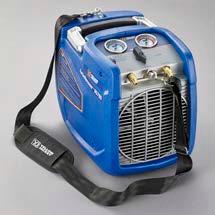
TSI’s 9600 VelociCalc and VelociCalc Pro multifunction ventilation series meters feature builtin workflow for calculating the percentage of outside air used to determine ventilation effec tiveness in a building or room. The VelociCalc Pro adds built-in workflows for heat flow calcu lation plus four methods for performing a duct traverse which speeds up the measurement process. The ventilation meter is ideal for HVAC testing and balancing, cleanroom testing, bio logical safety, cabinet and laboratory fume hood testing, as well as HVAC commissioning and troubleshooting. The meters feature highresolution colour screen displays, multiple measurements, and prompts to guide users through setup and operation. tsi.com




HPACMAG.COM DECEMBER 2022 | HPAC 39 TEST & MEASUREMENT PRODUCTS
It’s our promise you’ll receive the BEST AFTER SALES SUPPORT when you buy a KANE Analyser - here’s what that means: 1.877.475.0648 WWW.KANETEST.CA MADE IN THE UK KANE258 TEMPERATURE MEASUREMENT HEAT EXCHANGER TEST 10 Year warranty with annual recertification. 2 day business turnaround on calibrations Free Return courier to your location. Theft protection - 25% off* when replacing your obsolete or stolen KANE analyser. All inclusive fixed pricing. Canadian based sales & technical support. Exclusive email offers. KANE CARE applies to KANE258, KANE358 & KANE458S and all of their configurations *Discount off MSRP KANE358 PRESSURE MEASUREMENT ONBOARD DIFFERENTIAL PRESSURE KANE458S WIRELESS CONNECTIVITY SENSOR UPGRADES HPAC_Kane_TPS_Dec22.indd 1 2022-11-21 3:43 PM
Kane combustion analyzers are now offered with free Kane Care—which includes up to 10-year warranty with annual re certification. The flue gas analyzers include a 10,000 ppm CO sensor with over-range protection pump. They measure CO, CO2, differential temperature and differential pressure, and they calculate O2 and X-Air losses and efficiency. The devices are also compatible with the wireless Kane printer app, iOS and Android compatible. kanetest.ca
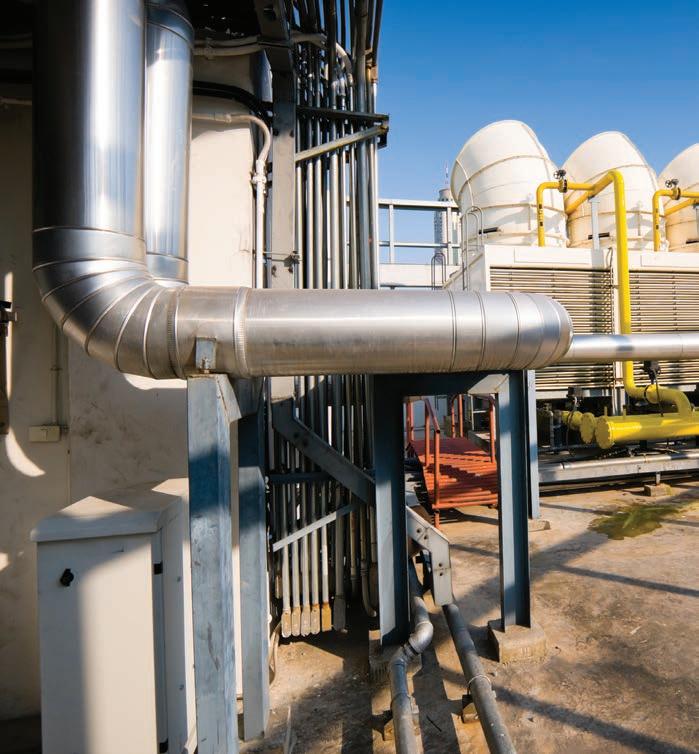
Fieldpiece Instruments model SR47 is an upgraded wireless refrigerant scale designed for HVAC/R contractors and tech nicians. Replacing the SRS3, the compact and lightweight (7-lb.) SR47 offers a 252-lb. max. load capacity and an over sized 13-in. platform with integrated bumpers engineered to fit any refrigerant tank. It features battery life of up to 200 hours and a wireless 1,000-ft. range with the Job Link system app, allowing technicians to capture data and send reports or invoices, and it integrates with other tool measurements such as SMAN digital manifolds. Its wireless remote can be stored under the scale. fieldpiece.com

The new Flir One Edge Pro from Teledyne Flir is a unique wireless thermal-visible camera for use with mobile devices. The unit can be hand held on its own or, with its built-in spring-loaded clip, can attach to many types of mobile phones and tablets. Communicating to an app on the mobile device, the unit features a 160×120 resolution radiometric Lepton thermal imaging camera paired with a visible camera. The cam era images are brought together via its MSX im age enhancement feature that overlays the de tail of the visible camera onto the thermal image without sacrificing any thermal data. flir.com

The MAKO by Arbiter is a digital gauge for the backflow and cross connection control industry. A water-resistant digital solution, the MAKO is a USC FCCCHR Manual 10 approved test kit and can perform all standard backflow testing pro cedures. The kit includes all adapters and hos es. The wetted components are made from NSF FDA food safe materials and the hoses are de signed with flexible food grade material. The unit is ergonomically designed and includes a swivel hook to easily hang where necessary. It features a backlit display, quick stabilization, brass filter housings, accurate differential sen sor, and a capture button to store readings, and communicates via Bluetooth to a phone. And it runs on four AA batteries. arbiterbackflow.com
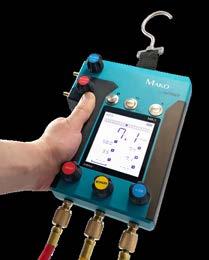
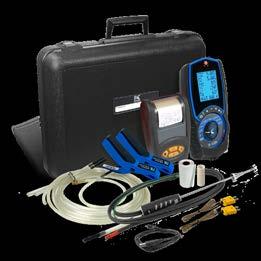
40 HPAC | DECEMBER 2022 HPACMAG.COM TEST & MEASUREMENT PRODUCTS The biggest change coming to the HVAC industry is recertification to UL 60335-2-40. Intertek can help manufacturers during the transition period. UL 60335-2-40 RECERTIFICATION +1 800 WORLDLAB (967 5352) icenter@intertek.com Intertek.com/HVACR FOR MORE INFORMATION HPAC_intertek_Feb22.indd 1
AM
2022-01-31 11:44
DANFOSS GROWING COMPRESSOR BUSINESS THROUGH ACQUISITION
Danfoss announced its intent to acquire German-based compressor manufac turer BOCK, a leader in developing com pressors for the natural refrigerant CO2 since 1993.

With the acquisition, Danfoss adds a portfolio of semi-hermetic compressors for natural refrigerants such as CO2 and other low-GWP refrigerants to its line-up of oil-free centrifugal compressors, in verter-scroll, reciprocating and screw compressors, and condensing units.
“The CO2 market in North America is expected to grow at a rate of 45% over the next four years,” said Luis Tovar, sales development manager for com mercial compressors for Danfoss North America, “The Bock portfolio together with other CO2 products developed by Danfoss will help to support this transi tion in the food retail market.”
In addition, the U.S.-based Alliance to Save Energy recently presented Danfoss with the Innovative Star of Energy Efficiency Award for the company’s ef forts to create solutions that decarbon ize through energy efficiency.
Technologies such as oil-free and vari able-speed compressors, hybrid fuel
MECHANICAL SUPPLY NEWS
MANUFACTURERS • DISTRIBUTORS • WHOLESALERS
DISTRIBUTION
>> Wolseley Canada opened a new branch at 1315 Industrial Rd., West Kelowna, B.C., a 17,000-sq. ft. facility offering plumbing and fire protection products, with HVAC products to be added over time. wolseleyexpress.com
>> Centrotherm Eco Systems has an nounced that Air Solutions Inc. of Cambridge, Ont. is now representing both InnoFlue polypropylene vent sys tems and its Air Excellent air manage ment systems in Ontario, Manitoba, and Saskatchewan. airsolutions.ca centrotherm.us.com
systems and heat recovery technologies are all recognized for efficiency. In addi tion, Danfoss has pledged to be carbonneutral in its global operations by 2030, and in March 2022 the company reached its 2030 target of doubling the productivity in its factories globally –nine years ahead of time. danfoss.com
>> Hydronitech is now representing Braeburn products including thermo stats and other controls in eastern Canada covering Ontario, Quebec and the Atlantic provinces. hydronitech.ca braeburnonline.com
>> Stelpro and Nedco have reached an agreement that will see Stelpro prod ucts become available across Canada from national electric products distrib utor, Nedco. Stelpro has been a sup plier to Nedco in Quebec for more than 20 years, and as of September the two companies decided to expand their partnership nationwide. stelpro.com nedco.ca
NOBLE HOSTS FALL TRADESHOW EVENT IN TORONTO
Attracting HVAC and plumbing profes sionals from across the GTA and be yond, wholesaler Noble held its annual fall trade show on Thursday, October 13th at the Universal Eventspace in Vaughan, just north of Toronto.

The event included some 85 exhibi tors and five free seminars. noble.ca
OUELLET CANADA AWARDS SCHOLARSHIP
Ouellet Canada awarded Kim Leboeuf, a student at Université de Sherbrooke, a scholarship offered through a partner ship with Electro-Federation Canada.
For the last four years, Ouellet has con tributed to this scholarship program, which aims to support a university or col lege student with their education and help them fulfill their career goals. A cheque for $3,500 was given to Leboeuf on October 27 at Dettson Industries (a Ouellet company) in Sherbrooke, Québec. ouellet.com

HPACMAG.COM DECEMBER 2022 | HPAC 41
Scholarship award presented to Kim Leboeuf (centre), from Jacinthe Nichols, R&D coordinator at Dettson Industries (left) and Louis Beaulieu, CEO of Ouellet Group.
Continued on p42
Marcus Albrecht, CEO, Bock (left) and Kristian Strand, president, Danfoss commercial compressors.
EMERSON SELLING MAJORITY INTEREST IN HVAC/R BUSINESS

Emerson, is selling a majority stake in its Climate Technologies business to pri vate equity fund Blackstone in a trans action valuing the HVAC/R business segment at US$14 billion.
The standalone Climate Technologies business includes multiple brands includ ing Copeland compressors, WhiteRodgers, Sensi, Vilter, and Dixell Electronics among a portfolio of products and services representing approximately US$5 billion in revenue.
Emerson will receive US$9.5 billion and retain 45% ownership of the Climate
Morgan, current president of AIM/R

CANADIAN AT HELM OF AIM/R
Brian Morgan, principal of The Morgan Group, has become the first Canadian to be president of the Association of Independent Manufacturers’/Representatives (AIM/R), a North American trade association of independent sales representatives in the plumbing, HVAC/R and related industries. Morgan took the helm at AIM/R’s mid-October annual convention held in Colorado where the association celebrated its 50th anniversary. aimr.net
Technologies business, which will be structured as a joint venture between Emerson and Blackstone, until its po tential sale or IPO.
Going forward, Emerson is transitioning into a global automation company with software and technology solutions for manufacturing and processing industries.
Earlier this year Emerson sold its InSinkErator business to Whirlpool Corp. emerson.com
MASTER ACQUIRES FORTRESS GROUP
The Master Group, the national whole saler with 68 branches and five distribu tion centres across Canada and into the U.S., has expanded its reach across Southwestern Ontario with the acquisi tion of Waterloo-based Fortress Group.
Established in 1984, Fortress spe cializes in wholesale distribution of HVAC/R products for residential and light commercial applications. In addi tion to Waterloo, the wholesaler oper ates branches in Guelph, Hamilton, London and Cambridge.
The acquisition provides a new area of coverage for Master in Waterloo, Guelph and London, while the locations in Hamilton and Cambridge will extend the company’s reach in those markets. master.ca
RECTORSEAL ACQUIRES THREE NEW PRODUCT LINES
NEXT SUPPLY SCORES AGAIN
Once again Next Plumbing and Hydronics Supply delivered at the annual Road Hockey to Conquer Cancer tournament, this year raising over $454,000 for the charity event that took place on Saturday October 1. Overall the fund raiser col lected $2.6 million in support of The Princess Margaret Cancer Foundation. The event has raised $27.5m in 11 years.
Next participated with 25 teams and over 300 people, representing company staff, over 22 vendors/manufacturers, many customers and several supplier partners as well as friends and family. The Next teams were elibible to play with five celebrities this year, including: Jeremy Roenick, Al Iafrate, Brad May, Nick Kypreos, and Anna Licht.
“We believe in being integral to our customers, coworkers and community” says Michael Storfer, CEO, “and events like this are the perfect opportunity to en gage employees, foster teamwork, have a ton of fun - and be able to give back to this vital cause that has impacted so many”. roadhockeytoconquercancer.ca nextsupply.ca

RectorSeal has added Cover Guard line set covers, AC Guard HVAC condenser protection cages and Falcon Stainless flexible water and gas connectors to its family of brands.
The lineset covers provide adjustable support from two to four inches with snap-on covers to accommodate multi ple linesets and condensate drains.
Constructed of steel, the AC Guard cages provide a physical and visual de terrent for residential and commercial condensing units. And Falcon Stainless provides corrugated stainless steel and flexible water and gas connectors. rectorseal.com
42 HPAC | DECEMBER 2022 HPACMAG.COM < MSN Continued from p41
NEXT
STUDIOS
BRIAN MORGAN PHOTO: GASTON
PHOTOGRAPHY/
PHOTO SOMBILON
Brian
SANIFLO CANADA OFFERS STUDENT SCHOLARSHIPS
Saniflo Canada is offering scholarships to trade school students in plumbing programs attending Ontario colleges, with up to 20 scholarships on offer. Intended to help cover costs for the 2022-23 academic year, colleges in cluding Collège Boréal, Humber College and La Cité Collegiale are offering two scholarships to eligible apprentices. And Conestoga College and Mohawk College will distribute four scholarships each to qualified candi dates. In each case, one of the students selected from each college will iden tify as female, and students applying for the scholarships must be registered in Level 1 of the 306A Plumber (Apprenticeship) College Certificate Program. saniflo.ca

With great sadness that the White family, own ers of Taco Comfort Solutions, announced the sudden passing of John Hazen White III, 35, on Thursday, November 3, 2022. John began his career with Taco during high school, start ing in maintenance and working his way through many de partments. His experience included a post with a manufacturer’s rep firm in Pennsylvania before returning to Taco, most recently as senior vice president, North American OEM sales. He was well loved by Taco employees and his customers.


Barclay Sales has announced two additions. Joshua Ferguson has joined the technical sales team in Alberta, and Cam Giroux is now the mechanical and hydronic specialist based in the B.C. office. Ferguson has over 20 years in the in dustry and previously owned a plumbing and HVAC business in Calgary for 14 years. Giroux has relocated to the west coast after17 years in the industry most recently owning a hydronics installation company in Toronto for 12 years.
Rolf Fischer has been named Canadian national sales manager for Stern-Williams, Fiat Products and Prier Products. Fischer brings over 30 years of sales experience. He was most recently with Independent Mechanical Supply and previously held progressive sales roles with OS&B, Aquatherm and Zurn.


Viessmann Canada has announced two appoint ments in Langley, B.C., where Tarandeep Singh has joined as territory sales manager, and Jeremy Manalo is now logistics coordinator. In addition, Joshua Burns has joined Viessmann as market ing coordinator. Based in Waterloo, Burns, a recent interna tional business management graduate from Conestoga College, supports Viessmann marketing in North America.

BMI announced that Mike Lavoie, vice-president of business development, is retiring at the end of 2022. Lavoie originally joined BMI in 2005 as its Eastern Canada sales manager and has spent 30 years in the industry. In his role with BMI, he always fo cused on building long-term relationships with both customers and suppliers.

Ouellet Canada has appointed Mari-Céline Gendron as territory manager for Rive-Sud, Montreal. In her new role Gendron will work with the sales team to grow market share and customer satisfaction.

Manufacturer’s representative Equipco celebrates 40 years in business this year and has announced five team members have been elevated to the position of associate partners in the company. Congratulations to: Nick Bérubé in Ottawa; Evan Cikaluk in Calgary; Adam Hedden in London, Ont.; Pierre Huneault and Bryan Jones both in Coquitlam, B.C.
NAVAC has appointed Bryan Schwartz as national training manager. Joining NAVAC in 2020, Schwartz has nearly 25 years of sales and service manage ment experience, most recently as senior national training manager for LG Electronics.





 Students at Collège Boréal (Sudbury): Chloé Clément (middle) and Owen Fedat-Tellier (right).
White
Fischer
Giroux
Burns
Lavoie
Gendron
Schwartz
Cikaluk
Huneault
Ferguson
Jones Bérubé
Students at Collège Boréal (Sudbury): Chloé Clément (middle) and Owen Fedat-Tellier (right).
White
Fischer
Giroux
Burns
Lavoie
Gendron
Schwartz
Cikaluk
Huneault
Ferguson
Jones Bérubé
PEOPLE > HPACMAG.COM DECEMBER 2022 | HPAC 43
Hedden
PROBLEM SOLVING SOLUTIONS
To improve your troubleshooting abilities and decision making skills, here are some things you need to understand.
BY STEVE GOLDIE
Decision making and problem solving abilities are very useful and valuable skills to have in all walks of life, and plumbing and heating is no exception. Whether you are a first year apprentice, or a journey person with decades of experience under your belt, chances are each and every day presents you with a multitude of deci sions to make, challenges to overcome and problems to solve.
Our brains are very complex and mysterious things, and many factors in fluence and affect how successful we will be in our decision making. Good decisions solve problems and lead to positive outcomes. Poor decisions, rather than solve problems, more often than not create new problems.
The good news is, problem solving and good decision making, in life gen erally and in our professional lives, can be a learned skill.
Let’s take a look at some of the ways we can all hone our problem solving skills.
KNOWLEDGE
The first and most obvious ingredient for good problem solving is knowledge. That is why we go to school, to learn and gain the knowledge of how things work.
Every licensed tradesperson has gone to school, spent time studying
and learning, written and passed tests to show they have the knowledge to do the job.
In theory, they all come out with the same knowledge, but in practice, not all plumbers are great plumbers.
I am not picking on tradespeople, not all doctors are great doctors, and not all accountants are great accountants. I think one of the things that sets peo ple apart is those who truly excel at their chosen profession don’t simply learn how to, but they learn the why.
One of the wonderful, and some times exasperating traits of young chil dren is their seeming infinite ability to ask the question “Why?”
We need to encourage ourselves, even demand of ourselves, that we con tinually nurture that desire to know why.
COMPREHENSION
When we truly understand why things work the way they do, not only can we do great work in the first place, but we can much more easily figure out the so
lutions when something goes wrong.
It’s the difference between learning enough answers to pass a test, and truly learning and understanding the material so you can answer whatever questions are asked, and explain the reasons why.
As a wholesale distributor we see the difference when one contractor calls to complain that a boiler or water heater “doesn’t work,” and another calls in to tell us their boiler needs a new pres sure switch or ignitor.
The second caller has understood how it works, taken the time to go through the manual and diagnosed the cause of the problem. As a wholesaler, we are going to work with both custom ers to rectify the situation either way, but as a consumer which contractor would you prefer to hire?
STATE OF MIND
As I said earlier, there are many factors that can impact decision making, and
44 HPAC | DECEMBER 2022 HPACMAG.COM
Continued on p46
ILLUSTRATION: TARTILA/ADOBE STOCK
< PLUMBING




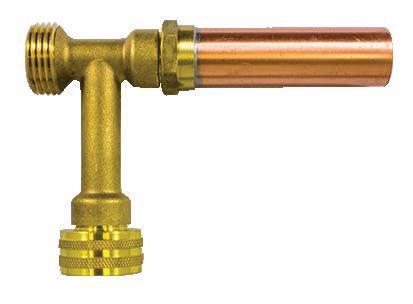

" " " "
Continued from p44
even the most knowledgeable, most experienced, worker can make a poor decision under certain circumstances.
I know for myself, if I don’t eat lunch, I get irritable in the afternoons. Yes, hangry really is a thing!
I am guilty I know, and people close to me know even better, if it gets too late in the day and I have not had lunch, I need to stop whatever it is I am doing and get some food.
I know of at least one contractor who claims he keeps Snickers bars handy in his truck just in case he encounters hangry Goldie.
I am sure I do not make my best deci sions when I let myself get there. Hunger, fatigue, poor health—all of these factors can negatively impact our ability to make good decisions. So the bottom line is we need to take care of ourselves and un derstand our limitations.
Sometimes the best decision you can make is to step away, remove your self from the situation until you are in a better frame of mind.
CREATIVELY SIMPLE
Sometimes when you have a particu larly challenging situation a bit of out side the box or creative thinking can be very helpful.
I know that as hydronics gets more popular, especially in the custom hous ing sector, systems are getting more and more complex. Customers want floor heating, snowmelt, spa and pool heating and such.
More is expected, and at the same time, often less and less space is allo cated in the mechanical room. Creative piping solutions are sometimes re quired. Often boiler rooms do not re semble the piping schematic drawings provided.
Only a skilled installer who truly un derstands how things work can fit ev erything in creatively and still meet the requirements of the system. Creativity can go too far as well, which reminds
me of another helpful tip when it comes to good decision making, don’t over think things. Keep it simple stupid (the KISS philosophy) is still often great ad vice. If you can simplify and still achieve the desired result, it is probably a good idea to do so.
a plumber and plumbing columnist.

To be fair though, this flood was not a result of a plumbing disaster, this time a cracked foundation was the culprit.
Regardless of the cause, water in the basement is never fun, and mopping it out of a crawlspace with limited head room is even less fun.
Now I hear some of you asking, “You buffoon, why wouldn’t you use a shop vacuum rather than a mop?”
And you would certainly have a point, however, like I said earlier, the brain is a mysterious thing (or is it just my brain).
PHONE A FRIEND
Another good exercise that can be helpful is playing devil’s advocate. Looking at a problem from a different angle can often reveal a solution you might otherwise have missed.
It may mean taking almost the exact opposite approach from what you would normally do. Getting another set of eyes on the problem can go hand in hand with this approach, so do not be afraid to ask someone else’s opinion.
If we let our egos get in the way, we can miss out on learning.
We may simply confirm what we al ready knew, or we may gain some new knowledge or insight, either way it is worth the effort.
The other set of eyes you need may also be our own. How often have you been stumped, walked away to do something else, and upon returning to the problem the solution seems so ob vious you hardly believe you missed it before?
LIGHT BULB MOMENTS
I had one of these moments myself re cently when I had to clean up some wa ter that had leaked into my crawlspace.
I know, I know, I’ve written about floods in my home before, not a good look for
After hours bent over, back aching, mopping and wringing, my brain finally woke up, or switched gears or whatever you want to call it, and the light bulb went on. I slapped myself upside the head, went to the garage, got the shop vacuum and made short work of the re maining water in the crawlspace.
LIFELONG JOURNEY
The experience of the old veteran tradespeople will definitely give them an advantage over the rookie appren tice, most of the time, but experience alone will not always lead to the best decision making.
Whether you are the cagey old vet eran, or the fresh new apprentice, learning, and specifically learning to make good decisions, should be a life long pursuit.
When you think you have seen it all, or know it all, get ready to be slapped up side the head with something new. <>
Steve Goldie learned his trade from his father while working as a plumber in the family business. After 21 years in the field, he joined the wholesale side of the business in 2002. His ex pertise is frequently called on to trou bleshoot systems and advise contractors. He can be reached at sgoldie@nextsupply.ca
46 HPAC | DECEMBER 2022 HPACMAG.COM <
PLUMBING
“We need to encourage ourselves, even demand of ourselves, that we continually nurture that desire to know why.”
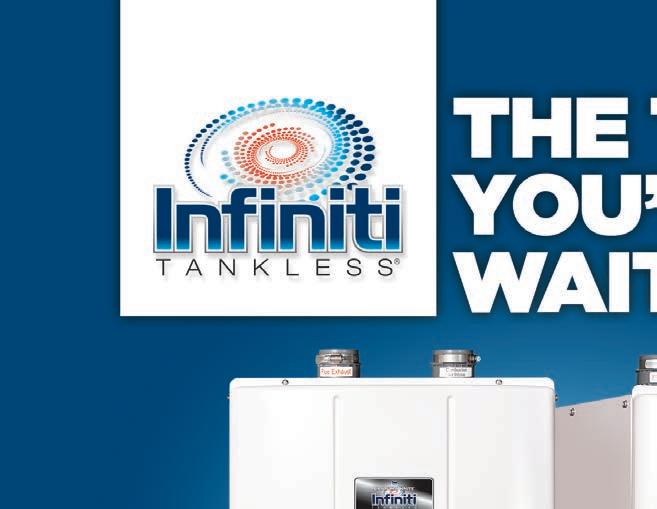

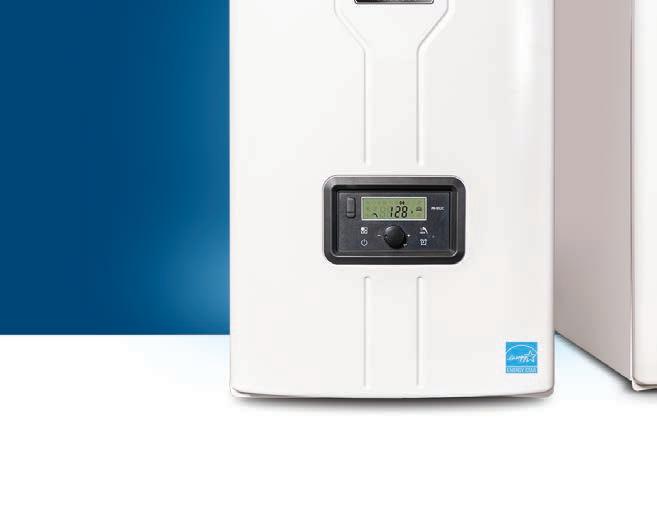
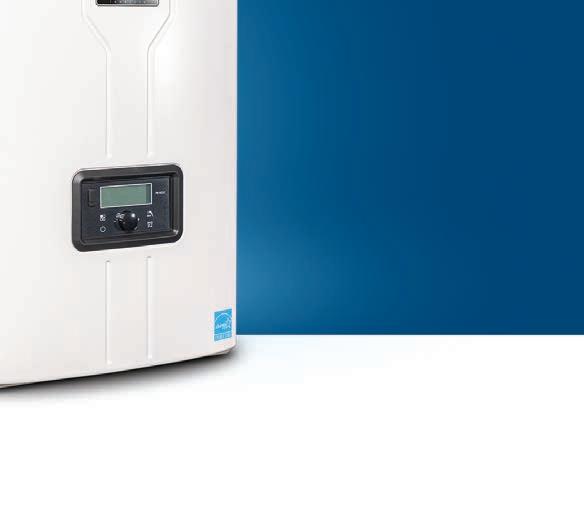

















Scan this QR code or visit bradfordwhite.com/infiniti-series-can ©2022, Bradford White Corporation. All rights reserved. BWHPAC1222 INTRODUCING THE INFINITI® GS AND INFINITI® GR At Bradford White, innovation is important. So we’re proud to introduce the Infiniti® GS and GR tankless water heaters which offer the energy-efficiency, high-performance and cutting-edge features you and your customers expect. • RESIDENTIAL AND COMMERCIAL. • OUTSTANDING RELIABLITY. Robust stainless steel heat exchanger for longer life. • POWERFUL PERFORMANCE. 11:1 turndown, high GPM output of 5.1 GPM at a 77°F rise. High temperature setting – up to 180° F (Infiniti® GS). • REMARKABLE FLEXIBILITY: • Available in natural gas or propane • Indoor or outdoor (with outdoor kit) • Available as standard model (Infiniti® GS): Cascadable up to 16 units, common vent up to 8 units • Or with built-in recirculation pump (Infiniti® GR) See Us At Booth C6105 2023 AHR EXPO
HEAT PUMP TROUBLESHOOTING TIPS

If you’re familiar with servicing AC units, the heat pump has just a couple more items that may need to be addressed. BY
DAVE DEMMA
In the previous issue of HPAC (Octo ber 2022) I outlined some the of the basic principles of heat pump tech nology. For the purposes of a quick re view, you may remember, like an air conditioner a heat pump transfers heat from the conditioned space, but in a heat pump application the conditioned space can be the outdoors. So, the evaporator is now located outdoors.
The heat transferred to the refriger ant in that process, plus the heat added to the refrigerant during the compres sion process is transferred to air in the conditioned space via the condenser.
So, the heat pump is nothing more than the basic vapour compression cy cle utilized in an air conditioning sys tem, with added controls and valving to allow the system to either remove heat
from the conditioned space (and trans fer it to the outdoors), or remove heat from the outdoors (and transfer it to the conditioned space). As such, rather than a distinct evaporator and con denser, in a heat pump we now have two dual purpose coils, an “indoor” coil and an “outdoor” coil.
Like any mechanical system, the heat pump will experience periodic per formance issues, some due to lack of maintenance, and some due to me chanical/electrical components failing.
When called upon for service, there are several things that can cause a heat pump’s inability to provide ade quate heat to the conditioned space:
• Voltage issues (low voltage, tripped breaker, blown fuses): This type of failure is typically the manifestation
of some other issue: a seized com pressor motor or grounded compres sor motor will draw excessive amperage and cause a breaker to trip (or fuses to blow). Finding the source of the excessive amperage draw will solve this issue.
• Thermostat issues: A defective ther mostat, or a thermostat that is wired incorrectly, can prevent the unit from starting when heat is required. Checking the thermostat for proper operation, checking the thermostat settings and wiring will confirm whether any of these are the problem.
• Plugged air filters or dirty indoor coil restricting the air supply: This is a simple maintenance issue, but it will certainly result in the inability to heat the conditioned space. Simple rem edy here, replace the filters and/or clean the indoor coil.
• Dirty outdoor coil: This is preventing the ability to transfer heat from the ambient to the refrigerant, resulting in a loss of heating capacity. Again, a simple remedy here, clean the out door coil.

48 HPAC | DECEMBER 2022 HPACMAG.COM
< REFRIGERATION
DARKDIAMOND67/ISTOCK/GETTY IMAGES
Figure 1. Outdoor heat pump condensing unit.
OPENING PHOTO:
• A system leak resulting in the loss of refrigerant: Since the refrigerant is the medium which facilitates the transfer of heat from one place to another, a loss of refrigerant results in a loss of heating capacity. Another simple remedy, locate the leak, re pair it, evacuate the system and properly recharge.
• Plugged flow controls (solenoid valves, thermostatic expansion valve, filter drier): This will result in the reduced flow of refrigerant, again reducing the unit’s capacity for heat. Since plugged flow controls are typi cally the result of system contamina tion, simply replacing controls, or cleaning (in the case of a solenoid valve or thermostatic expansion valve) doesn’t solve the contaminant problem. Contaminants are typically the result of excessive discharge temperature (which might be caused by a dirty outdoor coil). If the contam inated system isn’t cleaned up (filterdrier replacement along with oil replacement if necessary), and if the issue which caused the contamina tion has not been resolved, it will likely manifest itself again.
• Contactor, relay and capacitor fail ures: More often than not, the failure of these components is simply due to age.
All of the above-mentioned potential problems are not unique to heat pumps only. These are common problems that could be experienced in any system us ing a standard vapour compression air conditioning (AC) system.
So, what would qualify as a system malfunction that is completely unique to the heat pump? This question can be best answered by quantifying the component differences between a standard AC system and a heat pump.
REVERSING VALVE
Again, you may recall from the previous article that in a heat pump, the revers ing valve is located in the discharge line between the compressor outlet
and the outdoor coil inlet. A solenoid coil, when energized, allows the valve to “shift” from one position to another.
In the de-energized mode, the refrig erant flows from the compressor dis charge port to the inlet of the outdoor coil. The other two ports allow the re frigerant vapour from the indoor coil to flow to the compressor suction port.
Figure 1 is a photo of an outdoor condensing unit, showing the various flow components (including the fourway reversing valve). There are two common ports on the four-way revers ing valve: (1) common discharge port, which is connected to the compressor discharge port, and (2) common suc tion port, which is connected to the compressor suction port.
The energizing/de-energizing of the pilot solenoid coil will cause the other two ports to interchange between sup ply to the outdoor coil/return from the
indoor coil, and supply to the indoor coil/return from the outdoor coil, thus allowing the compressor to supply its discharge gas to either the outdoor coil or indoor coil.
The photos in Figure 2 show a closeup of the four-way reversing valve, and a cut-away photo of the reversing valve. This shows the pilot solenoid valve (less coil) and the various pilot lines.

In the de-energized mode, the pilot solenoid will vent any high pressure from the left end of the valve body while simultaneously supplying high pressure vapour to right end of the valve body, forcing the slide piston to move to the right.
This will cause the two ports at the bottom left to align, allowing flow from the indoor coil outlet (bottom left port) to continue to the compressor suction (center port), and cause the top port and bottom right port to align, allowing flow from the compressor outlet to the outdoor coil inlet.
When the pilot solenoid coil is ener gized, the pilot valve shifts and vents any high pressure from the right end of the valve body while simultaneously supplying high pressure to the left end of the valve, forcing the slide piston to move to the left. This reverses the in door and outdoor connections, and al lowing the discharge vapour to flow to the inlet of the indoor coil, and con nects the outlet of the outdoor coil to the compressor suction.
FOUR WAY STOP
There are a number of scenarios that can develop in relation to the four-way reversing valve which will result in sys tem malfunctions.
Four-way valve not shifting to the heat mode:

1. Defective thermostat, not supplying voltage to the pilot solenoid valve coil.
2. Wiring issue, resulting in no voltage to the pilot solenoid valve coil.
3. Contaminants plugging the tiny pas sageways in the pilot solenoid valve,
on p50
HPACMAG.COM DECEMBER 2022 | HPAC 49
Continued
Figure 2. Close up photos of a reversing valve and a cutaway of a reversing valve.
“Four-way reversing valves are high production and relatively low cost … they are not built for accessibility … [in some cases] a valve replacement will be required.”
Continued from p49
which will result in the valve not prop erly shifting to either the heating or cooling position.
4. Heavy contamination resulting in the slide valve sticking.
Four-way reversing valves are high production and relatively low cost. As such, they are not built for accessibility. In either of the two failure modes de scribed in 3 and 4, a valve replacement will be required.
Four-way valve partially stuck in one mode or the other:
1. When a heat pump system shifts from the cooling mode to the heating mode, you will hear a pressure surge from the four-way reversion valve. If this sound is not heard, it might be indicative of a valve that is stuck. But further analysis should be done.
2. Manufacturers recommend that the typical temperature difference be tween the compressor discharge and the outlet port connected to the out door coil inlet (in cooling mode), or the indoor coil inlet (in heating mode) should be approximately 3F to 6F. This would suggest that if the temper ature drop is in this range, the entire discharge mass flow is flowing from the compressor discharge port to in let of the respective coil that is serv ing as the condenser. If the temperature difference is higher than the range above, it would suggest that valve’s slide piston is stuck in be tween the cooling position and heat ing position, resulting in only a portion of the discharge mass flow from the compressor is flowing through valve’s port connected to the inlet of the coil serving as the condenser in which ever mode the unit is operating in.
3. In addition to the above temperature condition, an abnormally high dis charge pressure combined with an abnormally high suction temperature would also suggest that the valve is stuck somewhere between the cool ing position and heating position.
Reversing valve diagram (illustration source: www.gunt.de).

4. Finally, when the compressor is pow ered off, there should only be a grad ual equalizing between the high an low side system pressures. A rapid equalization would also suggest that the four-way reversing valve is stuck in between the heating and cooling position.
AUTO DEFROST
Given that the heat pump produces heat by “cooling” the outdoor ambient condition, it is reasonable to under stand that there will be times when the outdoor coil will be operating at a satu rated temperature below 32F (0C).
When this happens, frost will build up on the fin and tube surfaces of the coil, eventually restricting airflow through the coil. This will not only result in a reduc tion in heat capacity, if the frost buildup is severe enough it will allow liquid re frigerant to flow to the compressor inlet resulting in compressor damage.
As such, a defrost cycle is initiated when the coil temperature falls to 32F (0C). Rather than an elaborate set of de frost controls, when defrost is required the unit simply reverses to the cooling mode.
This might seem a little counter intu itive, but this allows the outdoor coil to function as a condenser for several minutes, melting the frost buildup.
In some scenarios, the indoor fan motor will continue, and the addition of electric strip heat will negate the effect of the system being in cooling mode.
Outdoor coils that become severely frosted/iced-up are likely the result of a defective defrost temperature sensor.
QUICK STUDY
Like most systems that a technician may be unfamiliar with, heat pumps might be a source of mystery and confu sion. But a quick study of the system, its components, and the design behind the inclusion of those components, should result in the heat pump being just “an other” easy system to troubleshoot. <>
Dave Demma holds a de gree in refrigeration engi neering and worked as a journeyman refrigeration technician before moving into the manufacturing sector where he regularly trains contractor groups. Contact Dave at ddemma@uri.com

50 HPAC | DECEMBER 2022 HPACMAG.COM IMAGES SOURCED BY AUTHOR
<
REFRIGERATION
DEWALT has expanded its POWERSTACK platform with the POWERSTACK 20V MAX 5Ah battery that uses new pouch cell technology. Benefits of the new batteries include 50% more power, 50% more work per charge and twice the lifespan of previous generations along with greater durability with a non-marring over-molded rubber base. Compatible with all DEWALT 20V MAX tools and chargers, it features a 3-LED fuel gauge that dis plays the battery’s state-of-charge, helping avoid unplanned work stoppages. dewalt.com/powerstack


KNIPEX Tools’ universal snap knife, the CutiX (90 10 165 BKA), features an innovative stabilization bar that keeps the blade from bending for quicker cutting. The CutiX’s extendable stabilization bar can be engaged or retracted based on applica tion. The stabilization bar allows the user to apply more pressure directly on the blade. The CutiX also features a hardened steel pin to secure the blade. Constructed with a lightweight magnesium housing, the CutiX has non-slip gripping surfaces and two separate sliders—one for the blade and one for the stabilization bar. knipex-tools.com

Milwaukee’s BOLT safety line-up includes a complete head protection solution with eye vi sors, polycarbonate face shields and USB headlamp options. The eye visor and face shield lenses are treated with an anti-scratch exterior hard coating and a fog-free interior. The full face shields secure into the front slots on Milwaukee head protection. The recharge able headlamp lighting features an ultra-thin light that allows users to raise and lower face shields and eye visors and delivers 600 lu mens of lighting and has four output modes: high, medium, low, and eco, for up to 32 hours of runtime. milwaukeetool.ca/ppe

Introduced for 2022, Helly Hansen’s BRZ pants are designed for the job site and feature lightweight fabric and mechanical ventilation. The BRZ concept is in the men's Chelsea Evolution and women’s Luna collections. Featuring a combination of 4-way stretch polyamide and Helly Hansen’s polyamide and lightweight armored Cordura section where abrasion re sistance is the top priority, the Chelsea Evolution BRZ also features an innovative kneepad pocket that is accessible via the ventilation zipper on the exterior of the pant. The women-specific, women-designed, Luna BRZ collection work pant put functionality first. hhworkwear.com
RIDGID has introduced the 760 FXP Power Drive, a cordless threading solution that threads 1/8-in. to 2-in. pipe. The tool’s brushless motor completes up to 30 2-in. threads per charge using a 4Ah battery, an 8Ah battery is also available. Offered in two variations, 12-R and 11-R, it’s compatible with existing RIDGID threader die heads. Additional features include torque reaction shutoff, where it automatically shuts off when kickback is detected, and LEDs lights to help alert the user when the thread is nearing completion. ridged.com


HPACMAG.COM DECEMBER 2022 | HPAC 51
TOOLS OF THE TRADE


FREE to qualified subscribers! Please fill in the following and fax today to 416-442-2230 or visit our website and click on subscribe www.hpacmag.com YES! I wish to receive/continue to receive HPAC Magazine absolutely FREE! No Name Title Company Address City Province Postal Code Business Phone # ( ) Business Fax # ( ) Your FREE subscription also includes our FREE e-newsletter, please provide your e-mail address below: E-mail: Signature Date / / (Must be signed and dated to be valid) D M Y 1. Company Business Activity? (Check ONE only) o Mechanical Contractor o Refrigeration Service Engineer/Contractor o Fuel Oil Dealer/ Contractor o Wholesaler/Distributor/Agent o Consulting Engineers/Specifying Writer o Plumbing Inspector o Government o Hospitals and Related Institutions o Utilities o General Building Construction o Others Allied to the Field (please specify) 2. Do you specify, purchase and/or approve the purchase of mechanical products or services? o Yes o No 3. Company Job Sector? (Check ALL that apply) o Commercial o Residential o Industrial o Institutional 4. Number of employees at this location? o 1 - 4 o 20 - 49 o 200 - 499 o 2500 + o 5 - 9 o 50 - 99 o 500 - 999 o Unknown o 10 - 19 o 100 - 199 o 1000 - 2499 5. Company Job Activities? (Check ALL that apply) o Plumbing (i.e DHW, Piping etc.) o Ventilation o Hydronic Heating o Refrigeration o Forced Air Heating o Fire Protection o Electric Heating o Air Conditioning o Other (please specify) Publisher reserves the right to determine qualification & limit distribution. HPAC Magazine 111 Gordon Baker Rd. Suite 400, North York, ON M2H 3R1 FAX: 416-442-2230 Simply fax this form today or visit www.hpacmag.com and click subscribe! December 2022
TECA Municipal Heat Pump Certification (Hydronics/Vancouver)
The Thermal Environmental Comfort Association (TECA) continues its Mu nicipal Heat Pump Certification (hydronic) course. This course is a must have to utilize the new TECA heat pump drawings and design projects in volving air-to-water or water-to-water heat pumps. As of January 1, 2022, new build residential buildings under four stories in the City of Vancouver are no longer permitted to use natural gas for their heating and hot water systems, and in order to install a heat pump in Vancouver installers must have a Municipal Heat Pump Certification and be registered as a certi fied heat pump installer. Delivered online, this couse is not a self-paced offering–it is online synchronous delivery, and students will be expected to be available and online on the posted days and times. The program offers insight into the proper sizing, operation and logic of heat pumps when utilized in a hydronic heating or cooling system. Highlights include: principals of refrigeration, balance point calculations, chilled water pip ing, control strategies, pump and flow requirements, back-up systems and heat pump equipment selection and more. Contact TECA for course availability. teca.ca
Certified Residential Geothermal Designer Course
Offered by the Heating, Refrigeration and Air Conditioning Institute of Canada (HRAI), this course is for HVAC system designers who want to ensure geothermal heat pump systems meet the requirements of ANSI/ CSA C-448-2016. Students will learn how to properly design a residential geothermal heat pump system, starting with the benefits and types of ground source heat pumps. They will also learn the design process, in cluding energy loads and requirements and how to calculate loads, how to select mechanical systems, site, geology and soil conditions, ground heat exchanger design, pumping, interior piping and header design, and economics of the design. Upon successful completion of the course and passing the International Ground Source Heat Pump Association (IGSHPA) designer exam, participants will be issued HRAI and IGSHPA certification as a residential designer of GSHP systems. This course is being offered via virtual classroom February 22-23, 2023. Course cost is $1,500 plus tax. hrai.ca
EDUCATIONAL OPPORTUNITIES ACROSS CANADA
Educational Conference for Distributors
Members of the Canadian Institute of Plumbing and Heating (CIPH) and Heating, Refrigeration and Air Conditioning Institute of Canada (HRAI) have access to the University of Innovative Distribution (UID) Conference, a four-day concentrated educational program focusing on the needs of the wholesale distribution industry. UID is sponsored by the Association Education Alliance (AEA) a consortium of over 40 distribution profes sional associations, in cooperation with the Department of Technology Leadership and Innovation of Purdue University. The intensive coference includes courses in six different tracks for wholesale distribution profes sionals: sales, management, distribution strategy, leadership, marketing, and operations. The next University of Innovative Distribution Conference takes place in Indianapolis, IN from March 13-16, 2023. Registration is US$1,495 for members, $1,795 for non-members (there is early bird pricing before January 30th). Capacity is capped at 575 registrations, and attendees receive a Certificate of Completion following the program. univid.org
Accredited Geothermal Installer Program
HVAC system installers seeking accreditation to install geothermal heat pump systems in accordance with the requirements of ANSI/CSA C-4482016 and based on the programs established by the International Ground Source Heat Pump Association (IGSHPA) can apply for this course. Learn ing to install ground-source heat pump systems will enable participants to open new markets and offer building owners an economical and po tentially low-carbon alternative for their space conditioning needs. HRAI is partnering with IGSHPA for this program, which has accredited thou sands of installers across North America and around the world. Topics covered in the program include: design and material options, system lay out, pipe joining techniques (for butt, socket, saddle and electro fusion), trenching/drilling processes, air and debris purging, pressure drop cal culations, pump and fluid selection, start-up, performance checking and troubleshooting. Completion of the workshop and passing the IGSHPA installer's exam will provide participants with IGSHPA accreditation as an installer of GSHP systems. This will include an installer's card and an IGSHPA certificate for three years. The course runs in virtual classroom sessions from January 23-24, 2023. Course cost is $1.700 plus tax and the required manuals. hrai.ca
HPACMAG.COM DECEMBER 2022 | HPAC 53
TRAINING Adrian Steel adriansteel.com p.7 AHR Expo ahrexpo.com p.27 Bradford White bradfordwhite.com/infiniti-series-can p.47 Canadian Construction Association ApprenticeSearch.com/CAS p.55 Chemfax ........................chemfax.com ....................................... p.2 IBC ibcboiler.com p.4, 28 ICP icpusa.com p.35 Intertek Intertek.com/HVACR p.40 Kane kanetest.ca p.39 Lyncar lyncar.com p.45 Navien Navieninc.ca p.17 Olimpia Splendid olimpiasplendidusa.com p.31 Raken rakenapp.com p.56 Uline uline.ca p.11 Viessmann viessmann.ca p.23 Wolseley wolseleyexpress.com
ADVERTISERS IN THIS ISSUE THE SOURCE
p.21
CALENDAR

FOR THE LATEST EVENT NEWS, SEE HPAC'S NEWSLETTER @ HPACMAG.COM
Visit event websites for the most current updates.
2023 Kitchen and Bath Industry Show
January 31 – February 2
The National Kitchen and Bath Association (NKBA) will be kicking off its 60th anniversary in 2023, and for the 10th year the Kitchen & Bath Industry Show (KBIS) will be co-located with the International Builders’ Show (IBS) during what is now called Design and Construction Week taking place at the Las Vegas Convention Center. kbis.com
BUILDEX Vancouver
February 15 – 16
The West Coast construction industry tradeshow and conference returns to the Vancouver Convention Centre West where contractors can network, learn and discover the newest innovations in the market. buildexvancouver.com
CIPH Annual Business Conference
June 18 - 20
CIPH will be celebrating its 90th year in 2023 and will be holding its annual business conference in St John’s, Newfoundland and Labrador. ciph.com
ASHRAE Winter Conference
February 4 – 8
ASHRAE returns to Atlanta for group's annual Winter Conference. The four-day event will be spread between two different venues, the Omni Hotel and the Georgia World Congress Center. There are eight conference tracks, including: fundamentals, HVAC/R systems, refrigerants, grid resilience and thermal storage, pathways to zero energy emissions, multi-family and residential buildings, building simulaton and virtual design, and operations.. ashrae.org
ISH
March 13 – 17
The world’s leading international trade show for the HVAC and plumbing industry hosted in Frankfurt, Germany returns after going virtual in 2021. The global showcase offers attendees insights into where the industry is headed for years to come. ish.messefrankfurt.com
ASHRAE Annual Conference
June 24 – 28
The ASHRAE Annual Conference will be heading to the JW Marriott in Tampa Bay for its yearly event. Virtual options are also available for anyone who can’t make the trip. ashrae.org
AHR Expo February 6-8
Manufacturers and suppliers from around the world will unveil the latest additions to their product line-ups, demonstrate what is new and innovative about the technologies, provide product details, and answer questions. The 2023 AHR Expo returns to Atlanta, for the first time since 2019. This year's event also includes an expanded series of free conference sessions over all three days of the show. ahrexpo.com
MCEE
April 19 – 20
Every two years, MCEE brings together over 400 exhibitors to promote thousands of products for the plumbing and HVAC/R industries. The 2023 event will take place at the Montreal Convention Centre. mcee.ca
HRAI Annual Conference
September 17 – 19
The 2023 version of HRAI’s Annual Conference will take place in Montreal. Along with a series of topical panel discussion sessions, the event will also include a variety of social and networking events. hrai.ca
Modern Hydronics Summit
September 21
Following sold out events in Ontario since 2013, the 2023 version of the Modern Hydronics Summit will be visiting a new part of Canada, the Hard Rock Casino in Port Coquitlam, B.C. modernhydronicssummit.com
CIPHEX West
October 18 – 19
CIPHEX West 2023 brings a full plumbing and heating tradeshow and conference to the BMO Centre at Stampede Park in Calgary. ciph.com
MCAC Annual Conference
October 18 – 21
The Mechanical Contractors Association of Canada (MCAC) is heading to wine country next fall as it will be holding its Annual National Conference at the Silverado Resort in Napa Valley, California. mcac.ca
Planning an event?
Send the details to editor@hpacmag.com
54 HPAC | DECEMBER 2022 HPACMAG.COM

*E&OE, some conditions apply. See website for details. NEED APPRENTICES? Up to $20,000* in help is available right now! Build your future workforce with support from the Canadian Apprenticeship Service for small and medium-sized businesses. • Free access to employer-apprentice matching services • Free access to mentorship programs • Free access to diversity and inclusion training Apply for your grant at ApprenticeSearch.com/CAS

































Meet us in person at World of Concrete and ConExpo WOC: Booth N1663 | ConExpo: Booth N12276 4.7 4.5 4.7 40 Win more repeat business. Finding new customers and projects can cost contractors both time and money. With the right framework for success, you can provide an excellent experience for every customer that brings more business—without extra effort. Real-time productivity data helps with: Communication Document project updates, delays, and work completed faster. Execution Measure productivity and progress, then compare actuals vs. budgeted as you build. Reputation Build better relationships with project stakeholders and improve future bids. Attend a demo, get a free $100 Amazon gi card.























 By Logan Caswell
By Logan Caswell
 By Ian McTeer
By Ian McTeer




























































































































 Students at Collège Boréal (Sudbury): Chloé Clément (middle) and Owen Fedat-Tellier (right).
White
Fischer
Giroux
Burns
Lavoie
Gendron
Schwartz
Cikaluk
Huneault
Ferguson
Jones Bérubé
Students at Collège Boréal (Sudbury): Chloé Clément (middle) and Owen Fedat-Tellier (right).
White
Fischer
Giroux
Burns
Lavoie
Gendron
Schwartz
Cikaluk
Huneault
Ferguson
Jones Bérubé






































































